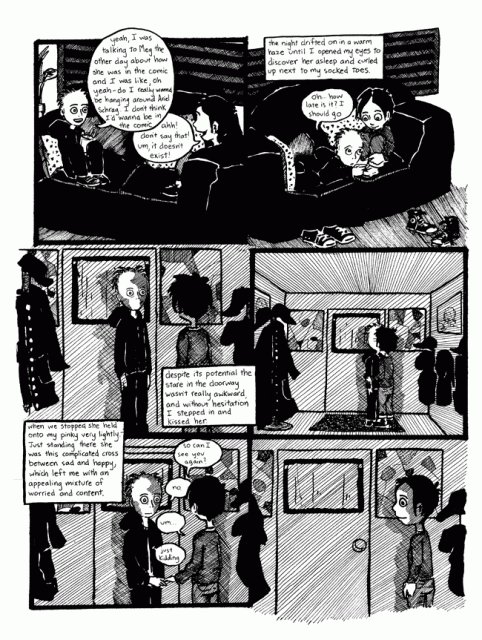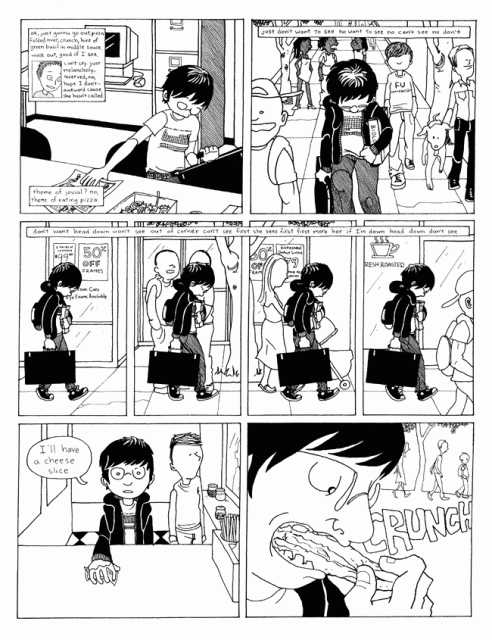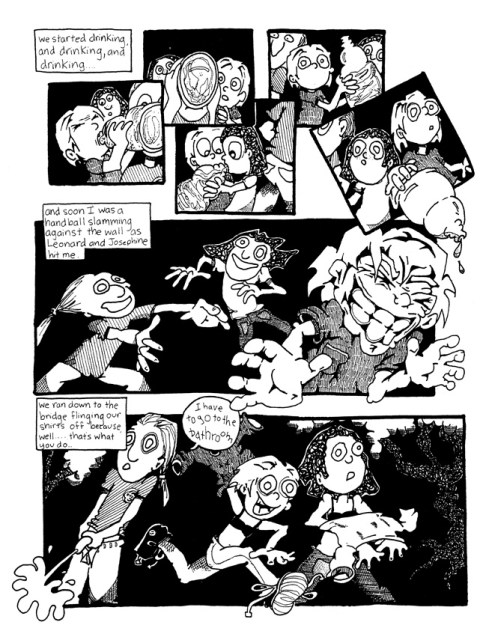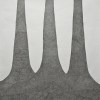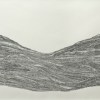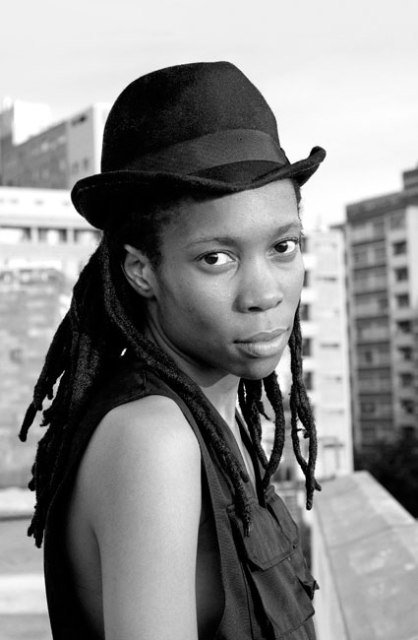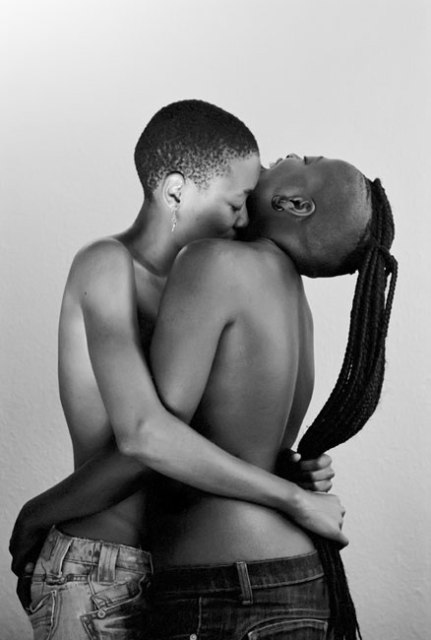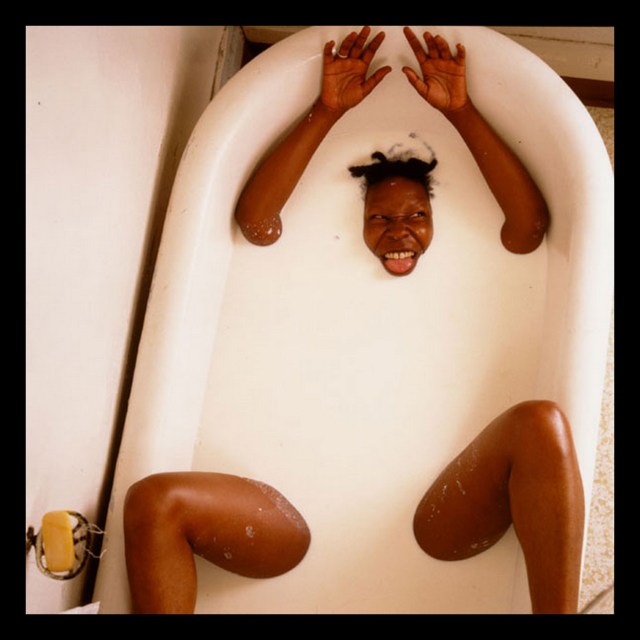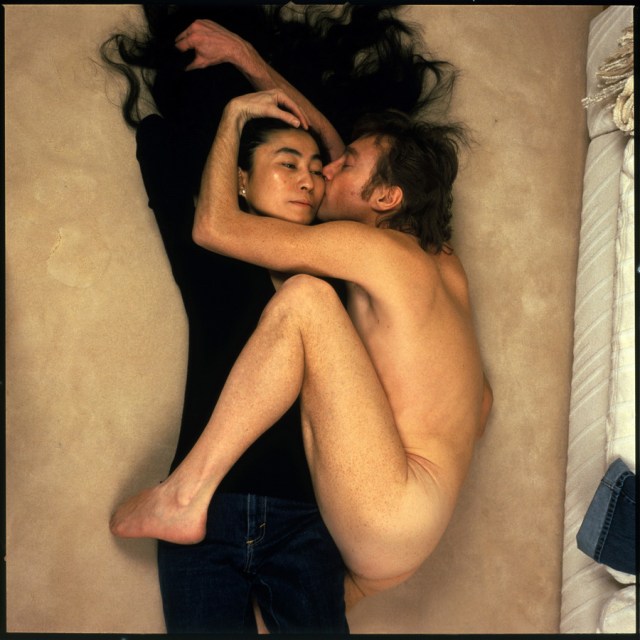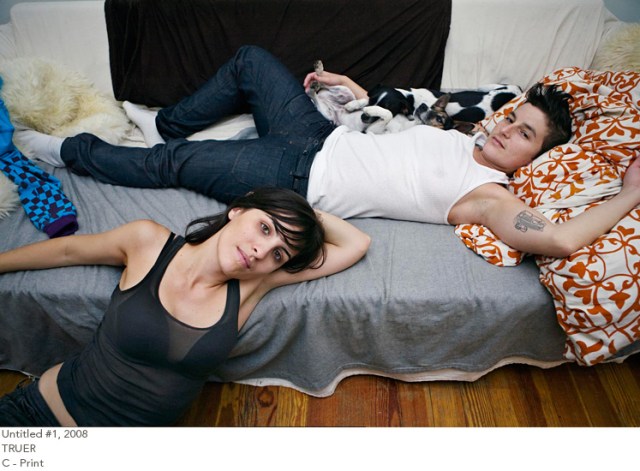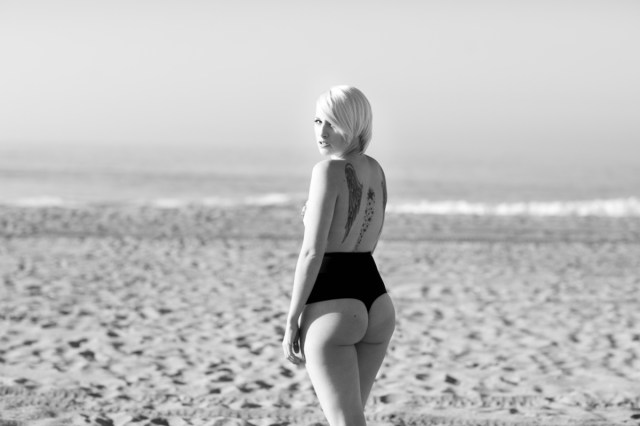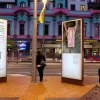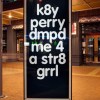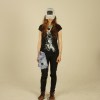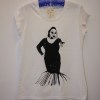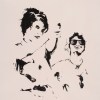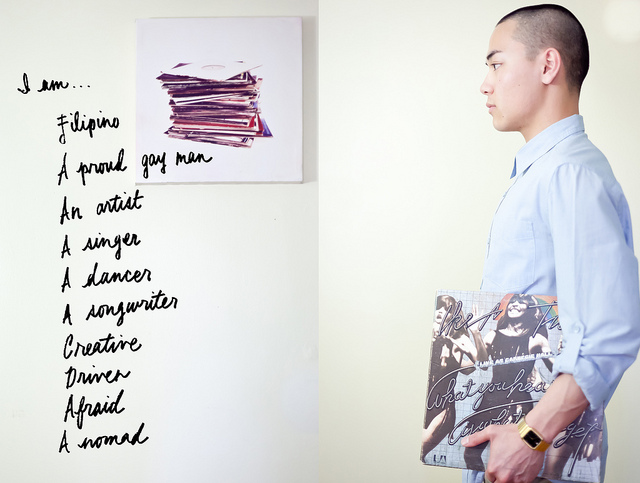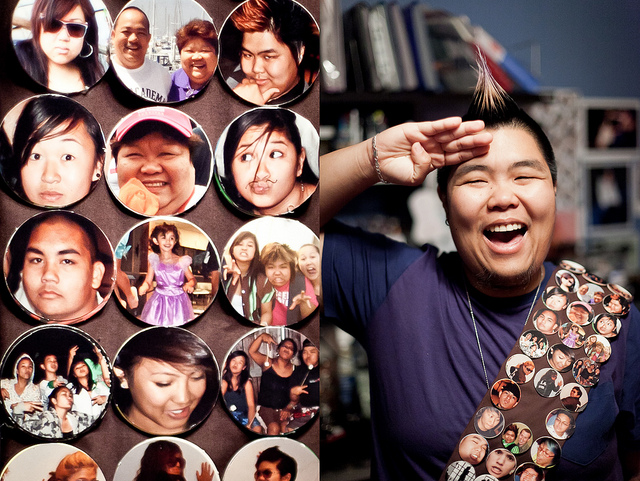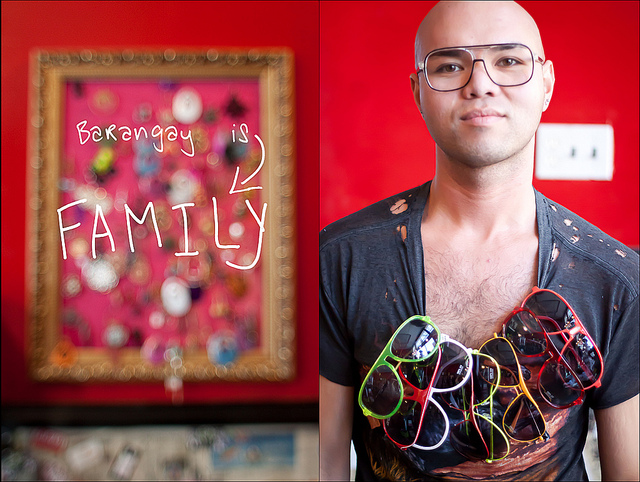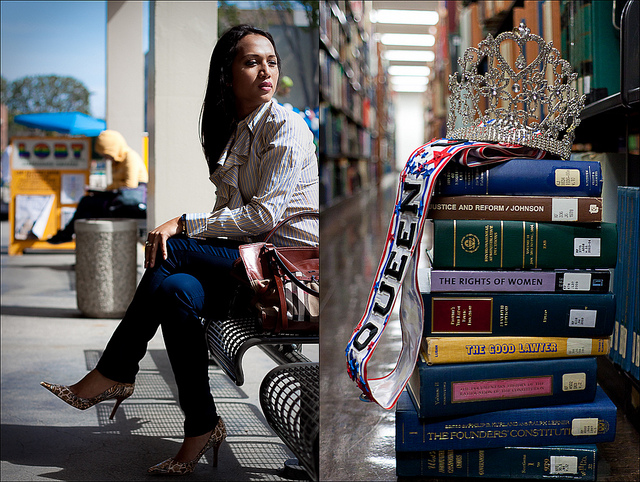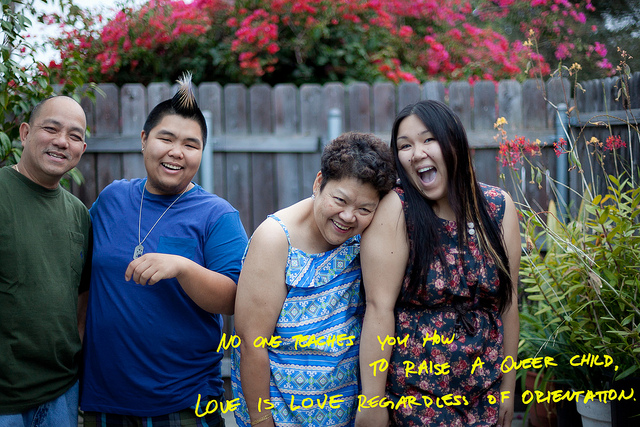Art Attack!: Ariel Schrag Relives High School So You Don’t Have To
0. 1/28/2012 – Art Attack Call for Submissions, by Riese
1. 2/1/2012 – Art Attack Gallery: 100 Queer Woman Artists In Your Face, by The Team
2. 2/3/2012 – Judy Chicago, by Lindsay
3. 2/7/2012 – Gran Fury, by Rachel
4. 2/7/2012 – Diane Arbus, by MJ
5. 2/8/2012 – Laurel Nakadate, by Lemon
6. 2/9/2012 – 10 Websites For Looking At Pictures All Day, by Riese
7. 2/10/2012 – LTTR, by Jessica G.
8. 2/13/2012 – Hide/Seek, by Danielle
9. 2/15/2012 – Spotlight: Simone Meltesen, by Laneia
10. 2/15/2012 – Ivana, by Crystal
11. 2/15/2012 – Gluck, by Jennifer Thompson
12. 2/16/2012 – Jean-Michel Basquiat, by Gabrielle
13. 2/20/2012 – Yoko Ono, by Carmen
14. 2/20/2012 – Zanele Muholi, by Jamie
15. 2/20/2012 – The Malaya Project, by Whitney
16. 2/21/2012 – Feminist Fan Tees, by Ani Iti
17. 2/22/2012 – 12 Great Movies About Art, by Riese
18. 2/22/2012 – Kara Walker, by Liz
19. 2/22/2012 – Dese’Rae L. Stage, by Laneia
20. 2/22/2012 – Maya Deren, by Celia David
21. 2/22/2012 – Spotlight: Bex Freund, by Rachel
22. 2/24/2012 – All the Cunning Stunts, by Krista Burton
23. 2/26/2012 – An Introductory Guide to Comics for Ladygays, by Ash
24. 2/27/2012 – Jenny Holzer, by Kolleen
25. 2/27/2012 – Tamara de Lempicka by Amanda Catharine
26. 2/27/2012 – 10 Contemporary Lesbian Photographers You Should Know About, by Lemon/Carrie/Riese
27. 2/27/2012 – Read a F*cking Book: ‘The Last Nude,’ by Amanda Catharine
28. 2/27/2012 – Spotlight: Alice Hyde, by Laneia
29. 2/28/2012 – Spotlight: Mars Hobrecker, by Laneia
30. 2/28/2012 – Spotlight: Michelle Muldrow, by Laneia
31. 2/28/2012 – Spotlight: Laura Doughtie, by Rachel
32. 2/28/2012 – Spotlight: Sadie Lee, by Mira
33. 2/29/2012 – Spotlight: Kathryn Weaver, by Laneia
34. 2/29/2012 – Ariel Schrag, by Whitney
![]()
Ariel Schrag is the graphic artist every midwestern / east coast-ern / west coast-ern / southern / northern / everywhere-ern queer needs to experience. Her books, Awkward, Definition, Potential and Likewise document the uncomfortable twists and turns of figuring out your sexuality in high school, and the four graphic memoirs perfectly document the insecurities of developing self-hood and the never-ending, heart-rending cycle of “does she like me / doesn’t she like me / OH NO SHE DOESN’T LIKE ME.”
The four books were written and illustrated by Schrag during each of the four years of high school — Awkward documents her freshman year, Definition sophomore year, Potential junior year and Likewise senior year — and her style changes and develops over the course of the four books. The series begins with Awkward, a semi-self-conscious graphic diary of Schrag’s daily life and ends with Likewise, a swirling cloud of Emily-Dickinson-head-flying-off revelation, where Schrag seeks to communicate emotions, the effect of drugs, and thoughts in illustration that’s sometimes psychedelic and sometimes The Scream-esque. It’s a brilliant set of memoirs that document queer adolescence in all of its painful and honest detail.
Potential was nominated for the Oscars of the graphic novel world, the Eisner Awards, and it’s my favorite of the four. The cover is modeled on a high school AP Biology textbook, which reflects how Schrag is trying to “connect the biology she reads in textbooks to the biology she’s living,” according to the book description — connecting the idea of sex to having sex, the idea of love to the act of loving someone, and figuring out how to negotiate these connections for the first time. In Potential, Schrag deals with a first-time same-sex relationship (and inevitable heartbreak), her thoughts about sexuality and desire to lose her virginity right now (“IT’S TIME TO LOSE MY FUCKING VIRGINITY,” she screams in one panel) and the painful, emotionally numbing divorce of her parents. It’s a book that hits your adolescent self hard in the gut. Schrag has a way with these sorts of things.
The details Schrag catches in her illustrations definitely reel you in to various points in your adolescence. Schrag’s mussy, cow-licked lifestyle haircut in Likewise reminds me of my own hair when I was in college, and probably will remind you of some of the hair cuts you’ve gotten in the past, too. Her description of how her wardrobe needs to be just so in order to look right — with just enough balance and proportion from ankle to shoulder — perfectly captures the microscopic attention to (or maybe more accurately, scrutiny of) our own bodies that is so uniquely high school. And Schrag’s frequently-described stomach-falling feeling when she realizes she is being let down or disappointed by the person she loves is captured perfectly, and takes me directly to when my stomach flopped over in anxiety and disappointment as a teenager.
All in all, Schrag’s books are amazing. She has a web comic that updates occasionally, titled Ariel and Kevin Invade Everything, and regularly posts illustrations published in various magazines and newspapers (like this one of Lady Gaga in New York Magazine) on her website. Schrag’s got some rennaisance-woman skills and has also written for shows like The L Word‘s third and fourth seasons and HBO’s How to Make It in America. Schrag wrote the film adaptation for Potential, to be developed by Killer Films, the same group that worked on Boys Don’t Cry — the film started shooting in 2009, but there’s no release date yet, to which I ask WHEN IS IT COMING OUT BECAUSE I NEED TO SEE IT.
Check out Schrag’s website here, listen to Schrag read excerpts from Potential below, and view some excerpts from Awkward and Definition below, too. It’s awesome. I promise.
Art Attack! Spotlight: Sadie Lee Demands That You Look
0. 1/28/2012 – Art Attack Call for Submissions, by Riese
1. 2/1/2012 – Art Attack Gallery: 100 Queer Woman Artists In Your Face, by The Team
2. 2/3/2012 – Judy Chicago, by Lindsay
3. 2/7/2012 – Gran Fury, by Rachel
4. 2/7/2012 – Diane Arbus, by MJ
5. 2/8/2012 – Laurel Nakadate, by Lemon
6. 2/9/2012 – 10 Websites For Looking At Pictures All Day, by Riese
7. 2/10/2012 – LTTR, by Jessica G.
8. 2/13/2012 – Hide/Seek, by Danielle
9. 2/15/2012 – Spotlight: Simone Meltesen, by Laneia
10. 2/15/2012 – Ivana, by Crystal
11. 2/15/2012 – Gluck, by Jennifer Thompson
12. 2/16/2012 – Jean-Michel Basquiat, by Gabrielle
13. 2/20/2012 – Yoko Ono, by Carmen
14. 2/20/2012 – Zanele Muholi, by Jamie
15. 2/20/2012 – The Malaya Project, by Whitney
16. 2/21/2012 – Feminist Fan Tees, by Ani Iti
17. 2/22/2012 – 12 Great Movies About Art, by Riese
18. 2/22/2012 – Kara Walker, by Liz
19. 2/22/2012 – Dese’Rae L. Stage, by Laneia
20. 2/22/2012 – Maya Deren, by Celia David
21. 2/22/2012 – Spotlight: Bex Freund, by Rachel
22. 2/24/2012 – All the Cunning Stunts, by Krista Burton
23. 2/26/2012 – An Introductory Guide to Comics for Ladygays, by Ash
24. 2/27/2012 – Jenny Holzer, by Kolleen
25. 2/27/2012 – Tamara de Lempicka by Amanda Catharine
26. 2/27/2012 – 10 Contemporary Lesbian Photographers You Should Know About, by Lemon/Carrie/Riese
27. 2/27/2012 – Read a F*cking Book: ‘The Last Nude,’ by Amanda Catharine
28. 2/27/2012 – Spotlight: Alice Hyde, by Laneia
29. 2/28/2012 – Spotlight: Mars Hobrecker, by Laneia
30. 2/28/2012 – Spotlight: Michelle Muldrow, by Laneia
31. 2/28/2012 – Spotlight: Laura Doughtie, by Rachel
32. 2/28/2012 – Spotlight: Sadie Lee, by Mira
![]()
“I just make them (paintings) because I can’t not make them. I sort of purge myself of them.”
– Sadie Lee in a video interview for homotopia
When I first saw Sadie Lee’s work I was 14 and my parents had no idea we were about to stumble into a room filled with lesbian art, nor did they think I would memorize every painting that was shown.

Venus Envy | Pinky
This rather personal introduction poses a question that’s relevant to the perception of queer art in general because, instead of “lesbian art,” I probably should have said “art authored by a lesbian” or, having in mind the reach of Lee’s work, omitted the word lesbian. However, had I done so, the sentence “When I first saw Sadie Lee’s work I was 14 and my parents had no idea we’re about to stumble into a room filled with art” would have taken an entirely different meaning. While I leave it to you (or to another article) to wonder whether this lesbian art vs. lesbian artist dichotomy exists and why, I gladly take it upon myself to introduce you to Sadie Lee’s work.
Although, at that time I had no idea who Sadie Lee was and how she identified, I still understood those paintings were different. They were eerie but in a way that felt familiar.
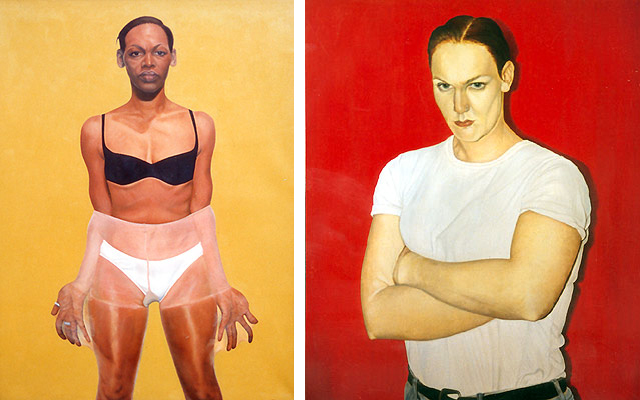
Flesh-Coloured Tights | Raging Bull
Later on, while I was still finding my way through the pillars of modern art and was very much unaware of both its heteronormativity and my own queerness, I came across a painting of hers whose title was so quietly subverting Picasso’s Femme à la Chemise, I was instantly hooked and the images I’d seen a few years earlier came right back to me.
This is the image, and it’s called La Butch en Chemise. Picasso is on the right.
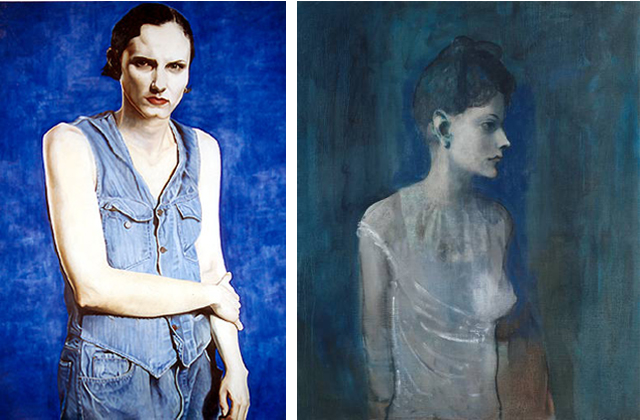
They’re demanding, her paintings, so they stay. As she puts it – you cannot just look at them. I know now that the title of the works I’d seen as a young teenager was in fact “Don’t Look.”
Women, nude women and even women in lesbian encounters, are traditionally (note how that word automatically implies a male painter) painted in a manner that makes it easy for the viewer to act as a voyeur. While inviting attention, they’re often deprived of their own sexuality (and reality) and turned into a form that is ideal for the spectator. The female spectator is, in that methodology, nonexistent. In contrast, Sadie Lee’s women demand direct eye contact. They are aware of their own sexuality and are observing the one who watches them. Although often highly exposed in their challenging of stereotypes and expected gender roles, her subjects remain the ones in control, and among all the layers of meaning they offer, I appreciate that one the most.
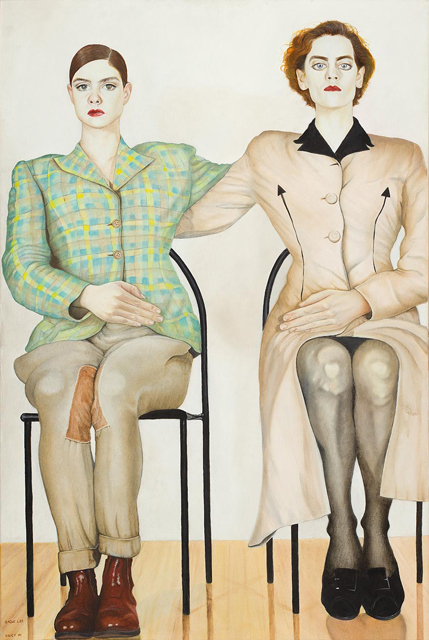
Erect Sadie Lee with her partner
To summarize this short appreciation I’ll leave you with titles of some of Sadie Lee’s series: Tomboys and Crossdressers, Inappropriate Women, Ladies of the Burlesque, And then He was a She, and ask you to notice how well she paints old(er) age.

Standing I | Standing II
Sadie Lee’s website is a good start if you wish to learn more about her and so is this video in which she talks about her art and other contemporary lesbian artists while painting.
Artist Attack! Spotlight: Laura Doughtie Makes Art From Moments of Failure
0. 1/28/2012 – Art Attack Call for Submissions, by Riese
1. 2/1/2012 – Art Attack Gallery: 100 Queer Woman Artists In Your Face, by The Team
2. 2/3/2012 – Judy Chicago, by Lindsay
3. 2/7/2012 – Gran Fury, by Rachel
4. 2/7/2012 – Diane Arbus, by MJ
5. 2/8/2012 – Laurel Nakadate, by Lemon
6. 2/9/2012 – 10 Websites For Looking At Pictures All Day, by Riese
7. 2/10/2012 – LTTR, by Jessica G.
8. 2/13/2012 – Hide/Seek, by Danielle
9. 2/15/2012 – Spotlight: Simone Meltesen, by Laneia
10. 2/15/2012 – Ivana, by Crystal
11. 2/15/2012 – Gluck, by Jennifer Thompson
12. 2/16/2012 – Jean-Michel Basquiat, by Gabrielle
13. 2/20/2012 – Yoko Ono, by Carmen
14. 2/20/2012 – Zanele Muholi, by Jamie
15. 2/20/2012 – The Malaya Project, by Whitney
16. 2/21/2012 – Feminist Fan Tees, by Ani Iti
17. 2/22/2012 – 12 Great Movies About Art, by Riese
18. 2/22/2012 – Kara Walker, by Liz
19. 2/22/2012 – Dese’Rae L. Stage, by Laneia
20. 2/22/2012 – Maya Deren, by Celia David
21. 2/22/2012 – Spotlight: Bex Freund, by Rachel
22. 2/24/2012 – All the Cunning Stunts, by Krista Burton
23. 2/26/2012 – An Introductory Guide to Comics for Ladygays, by Ash
24. 2/27/2012 – Jenny Holzer, by Kolleen
25. 2/27/2012 – Tamara de Lempicka by Amanda Catharine
26. 2/27/2012 – 10 Contemporary Lesbian Photographers You Should Know About, by Lemon/Carrie/Riese
27. 2/27/2012 – Read a F*cking Book: ‘The Last Nude,’ by Amanda Catharine
28. 2/27/2012 – Spotlight: Alice Hyde, by Laneia
29. 2/28/2012 – Spotlight: Mars Hobrecker, by Laneia
30. 2/28/2012 – Spotlight: Michelle Muldrow, by Laneia
31. 2/28/2012 – Spotlight: Laura Doughtie, by Rachel
![]()
Laura Doughtie’s work is something that you really need to see in person. Their ink drawings are densely layered, with millions of tiny lines building upon one another in a way that makes the clearly laborious process of building them upon each other as least as much a work of art as the finished product. Their creations of crumpled and collaged advertisements and society pages have a looming presence in the room, and are diminished unfairly by a tiny glowing screen. Unfortunately, a tiny glowing screen is the only space we have to give them. Luckily, Doughtie has an upcoming show of new large scale work opening March 10 at 500X in Dallas, TX! If you’re in the area, going to see this work in person is the only way to do it justice, and a way to do a huge favor to yourself as well.
Doughtie is 26 and spent years working in the contemporary art scene in New Orleans and Dallas. They now help run the 500X gallery in Dallas, and decorate cakes by day. Doughtie’s drawings are “all about mark making and the understanding of forms through that process… Biomorphic or organic in form the final image comes out of the repetition in line as opposed to a preconceived subject or theme.” Doughtie is inspired by obsession and repetition, both in the world around us and in our own rituals and habits. “Embracing failure. Obsessive thoughts. Banal repetition of actions. For me they can be both very meditative and calming or crazed and overwhelming. Intensely intimate.”
Artist Statement:
I live and work in Dallas, TX. I graduated from Tulane University in New Orleans in 2007. I am represented by 500X, Texas’ oldest, artist run, cooperative gallery.
I work with ink on paper.
What I want to create is a reversion to minimal organic forms accomplished through complex means. Both process and final work are simple yet consuming, reflecting my inclination toward minimal aesthetics and biomorphic patterns that take over the page into abstraction.
Ink on paper reflects my ideal in simple, monochrome materials. My work is set in the process of obsessive compulsive movement broken down and repeated until it fills the surface. I’ll begin with a set movement and repeat it over and over until the form is complete, with variations created through moments of failure. Such as, when the pen begins to run out of ink and a new one is needed, or my hand tires to the point it can no longer create the same line again and again. My work is created on a large scale in order for the viewer to be as consumed and absorbed into the drawing as I am creating them.
In process I try to recreate subjects that are appealing to me or I simply repeat a movement until it forms itself or some bigger pattern emerges that I find interesting and follow it. For me it’s about being lost in something so small, in both action and subject, that circumscribes an importance as fundamental units of something larger.
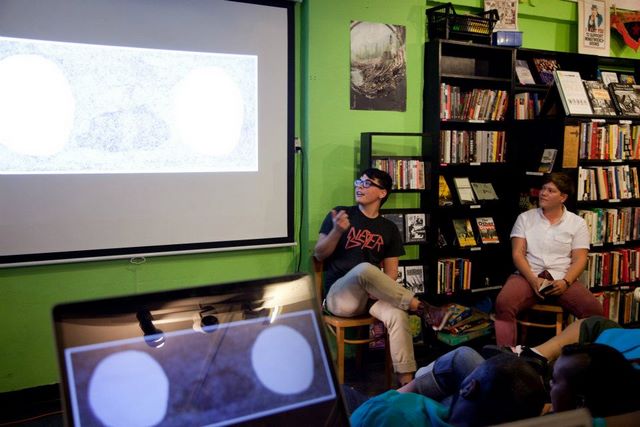
Photo by Joey Gidseg of Sir/Ma’am
Laura Doughtie‘s work can be seen at the 500X gallery on March 10, 2012.
Art Attack! Read A F*cking Book: ‘The Last Nude’
0. 1/28/2012 – Art Attack Call for Submissions, by Riese
1. 2/1/2012 – Art Attack Gallery: 100 Queer Woman Artists In Your Face, by The Team
2. 2/3/2012 – Judy Chicago, by Lindsay
3. 2/7/2012 – Gran Fury, by Rachel
4. 2/7/2012 – Diane Arbus, by MJ
5. 2/8/2012 – Laurel Nakadate, by Lemon
6. 2/9/2012 – 10 Websites For Looking At Pictures All Day, by Riese
7. 2/10/2012 – LTTR, by Jessica G.
8. 2/13/2012 – Hide/Seek, by Danielle
9. 2/15/2012 – Spotlight: Simone Meltesen, by Laneia
10. 2/15/2012 – Ivana, by Crystal
11. 2/15/2012 – Gluck, by Jennifer Thompson
12. 2/16/2012 – Jean-Michel Basquiat, by Gabrielle
13. 2/20/2012 – Yoko Ono, by Carmen
14. 2/20/2012 – Zanele Muholi, by Jamie
15. 2/20/2012 – The Malaya Project, by Whitney
16. 2/21/2012 – Feminist Fan Tees, by Ani Iti
17. 2/22/2012 – 12 Great Movies About Art, by Riese
18. 2/22/2012 – Kara Walker, by Liz
19. 2/22/2012 – Dese’Rae L. Stage, by Laneia
20. 2/22/2012 – Maya Deren, by Celia David
21. 2/22/2012 – Spotlight: Bex Freund, by Rachel
22. 2/24/2012 – All the Cunning Stunts, by Krista Burton
23. 2/26/2012 – An Introductory Guide to Comics for Ladygays, by Ash
24. 2/27/2012 – Jenny Holzer, by Kolleen
25. 2/27/2012 – Tamara de Lempicka by Amanda Catharine
25. 2/27/2012 – 10 Contemporary Lesbian Photographers You Should Know About, by Lemon/Carrie/Riese
26. 2/27/2012 – Read a F*cking Book: ‘The Last Nude,’ by Amanda Catharine
![]()
How do you write a novel about a real person? How do you decide what to keep or dismiss, embellish or invent? The challenge is compounded when there are still people alive to remember the subject — when those who were there, or whose parents were there, are in a position to maintain the official story or offer their own inevitable fictions? After all, unlike the biographer, the novelist doesn’t need to parse the legend created by her subject. In fact, she’s at liberty to pick and choose the most interesting, titillating, or salacious aspects and expand on them at will, all under the safe umbrella of fiction. Ellis Avery approaches such a legend in her book The Last Nude, which centers on the painter Tamara de Lempicka, perhaps best known for iconic, frequently reproduced paintings: “Auto Portrait” and “La Belle Rafaela.” (Read Art Attack!: Tamara de Lempicka Didn’t Care Who Knew)

I’m always hesitant to read historical fiction about real people because, while I love the genre, I can’t help but wonder if what I’m reading is true. I’m distracted by the intersection of fact and fiction and, if I’m perfectly honest, I usually wind up reading a biography after the novel. Avery elegantly avoids this problem – for I suspect there are a lot of would-be detectives like me! – by structuring her narrative in two parts. The first, comprising the bulk of the book, recounts the events of just under a year in the life of Rafaela, the model for de Lempicka’s famous painting. In giving Rafaela a surname, Fano, and a voice, Avery brings to life the woman who has so long be known only by a face on a canvas that has enthralled, seduced; been studied and psychoanalyzed. Rafaela’s narration is vibrant and believable as a seventeen-year-old American making her way in Paris without, of course, the permission of her parents. Avery strikes the right balance between youthful naïveté and hardened woman of the world, which surviving in Paris has made her. Rafaela entertains dreams of becoming a designer in between entertaining the men whose money and gifts pay for her apartment until her association with de Lempicka affords her a paycheck and independence.
Throughout Rafaela’s portion we meet several of the Parisian literati of the time, including Sylvia Beach and Adrienne Monnier, who cameo as Rafaela’s helpful lesbian godmothers. The minor characters flit around Rafaela and Tamara in varying degrees of complexity, and some prior knowledge of the characters – Romaine Brooks, Natalie Barney, etc. – is helpful, but not necessary. They stand alone as characters, but those interested in early 20th century LGBT culture will appreciate seeing them brought to life.
Rafaela’s idea of romance, tarnished by a string of boyfriends who certainly weren’t there for love, is rekindled when she meets a beautifully appointed woman perched on a car at the Bois de Boulogne. The woman is Tamara de Lempicka, and for this first part of the book, we see Tamara through Rafaela’s eyes, colored as they are by admiration, seduction, and a tragic inability to see Tamara’s betrayal until it blindsides her. Tamara is at first an apparition of elegance and aristocratic manner, but as the story progresses, the reader readily perceives cracks in the façade: where Rafaela falls in love with Tamara, it’s apparent from the first page that Tamara is more in love with the idea of Rafaela than she could ever be with the girl herself. Nevertheless, Tamara takes Rafaela home to her apartment to model, and ultimately to her bed. Their love affair is masterfully woven with the story of Tamara’s painting, the sweetness and passion of it all rendered with a literary echo of the sensual brushstrokes and vibrant color that characterizes the real “Belle Rafaela.”
There’s likely a temptation to fictionalize real people into characters who bear but a passing resemblance to their models so as to tell a better story, to make them more saintly or more horrific according to the plot. Tamara de Lempicka, to be sure, led a life that didn’t require much embellishment to seduce and enthrall the reader. If anything, Avery needed to humanize her, to dissociate her however minutely from the wealth, the jet-setting, the marriages, the fabulous parties and scandalous affairs, to turn her into a person worth caring about – which is not the same thing as caring about or respecting her artwork. Rafaela – who is wholly fictional, since not much is known about the model – is drawn to Tamara first by her accoutrements, before she knows anything about her: by her fancy car, her exclusive address, exotic profession, even the crispness of her gloves.
The last sixty pages are narrated in Tamara’s voice as an old woman. The device makes for a poetic but rushed ending as Avery must use Tamara to make up the time between the end of Rafaela’s story and Tamara’s old age. Avery is a writer of great subtlety, and it is particularly evident in the last few pages as Tamara considers the Rafaela she first painted and the ones she has worked on since, using artwork, appropriately, as a lens to examine aging. But it’s a one-sided and ultimately unsatisfying ending that is full of lovely phrases but unfulfilling in terms of the plot.
The Last Nude, like Avery’s first novel, The Teahouse Fire, is a deliciously ambiguous novel in its assessment of the characters, appropriate for a book that deals with real people who can’t be neatly pigeonholed for an ending. Rafaela may be the one betrayed, but she’s far from an innocent angel, and while Tamara is ruthless in her pursuit of art, money, and patronage, she’s ultimately not an unconscionable manipulator. It’s a story about the confluence of love and art, of sensual romance and pure eroticism, but also about the realities of life, particularly one lived at a time when one’s opportunities were limited by gender, money, and language – not so different, then, from our own.
And in the end, it’s a measured consideration of what kind of people might have provided the context in which to create art: the interpersonal relationships that foster the creativity behind it, the city that grounds it, the exchange of money and services that facilitate it, and what the people involved in its creation are obligated to sacrifice for its sake. The Last Nude provides a compellingly written backstory for a woman whose arresting, penetrating stare has captivated art aficionados for years. Ultimately, it’s still fiction peppered with appearances from well-known figures – but I rather like thinking of Rafaela as more than a footnote to the title of a painting.
Artists Attack! Ten Lesbian Photographers You Should Know (About)
0. 1/28/2012 – Art Attack Call for Submissions, by Riese
1. 2/1/2012 – Art Attack Gallery: 100 Queer Woman Artists In Your Face, by The Team
2. 2/3/2012 – Judy Chicago, by Lindsay
3. 2/7/2012 – Gran Fury, by Rachel
4. 2/7/2012 – Diane Arbus, by MJ
5. 2/8/2012 – Laurel Nakadate, by Lemon
6. 2/9/2012 – 10 Websites For Looking At Pictures All Day, by Riese
7. 2/10/2012 – LTTR, by Jessica G.
8. 2/13/2012 – Hide/Seek, by Danielle
9. 2/15/2012 – Spotlight: Simone Meltesen, by Laneia
10. 2/15/2012 – Ivana, by Crystal
11. 2/15/2012 – Gluck, by Jennifer Thompson
12. 2/16/2012 – Jean-Michel Basquiat, by Gabrielle
13. 2/20/2012 – Yoko Ono, by Carmen
14. 2/20/2012 – Zanele Muholi, by Jamie
15. 2/20/2012 – The Malaya Project, by Whitney
16. 2/21/2012 – Feminist Fan Tees, by Ani Iti
17. 2/22/2012 – 12 Great Movies About Art, by Riese
18. 2/22/2012 – Kara Walker, by Liz
19. 2/22/2012 – Dese’Rae L. Stage, by Laneia
20. 2/22/2012 – Maya Deren, by Celia David
21. 2/22/2012 – Spotlight: Bex Freund, by Rachel
22. 2/24/2012 – All the Cunning Stunts, by Krista Burton
23. 2/26/2012 – An Introductory Guide to Comics for Ladygays, by Ash
24. 2/27/2012 – Jenny Holzer, by Kolleen
25. 2/27/2012 – 10 Contemporary Lesbian Photographers You Should Know About, by Lemon/Carrie/Riese
![]()
[feature image by Sophia Wallace]
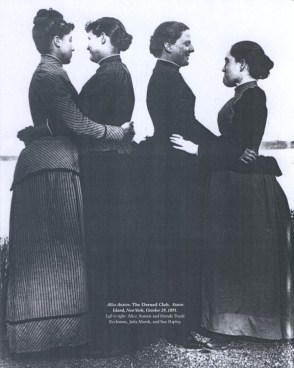
photo by Alice Austen
by Lemon & Carrie & Riese
Lesbians are perhaps more visible in the contemporary photography scene than any other aspect of popular visual art these days, but it’s been a long time coming — at the turn of the century, it was still nearly impossible for lesbian imagery to even see the light of day, let alone the cover of Vanity Fair.
The first well-recorded case of lesbian-produced photography is Emma Jean Gay, who was born in 1830 and taught herself photography in 1888. With the help of her ethnologist friend Alice Fletcher, who Emma had a big fat lesbian crush on, Emma moved out West and began photographing the Nez Perce. In the early-to-mid-20th century, gender bending and Sapphicly suggestive imagery would come from ladies like Alice Austen, Frances Benjamin Johnston and Margarethe Mather.
Many lesbian photographers we’re familiar with today rose to prominence in the 1970s and 80s — people like Cathy Cade, JEB (Joan E.Biren), Tea Corinne, Mumaz Karimjess, Chloe Atkins, Deborah Bright, Fiona Arnold, Jill Posener, Linda Kliewer, Jean Weisinger, Zone Paraiso Montoya and Hanh Thi Pham.
Today’s most well-known lesbian photographers are, hands down, Annie Leibovitz and Catherine Opie. The former is best-known for her editorial magazine work, and that’s true of many of the photographers we’ll discuss here today. Lately the commercial and the artistic seem to blur together more than ever, and a new generation of keen-eyed queers are making waves in the industry. Here are ten you should know about.
![]()
10 Contemporary Lesbian Photographers You Should Know (About)
[in no particular order]
+
1. Cass Bird
[website]
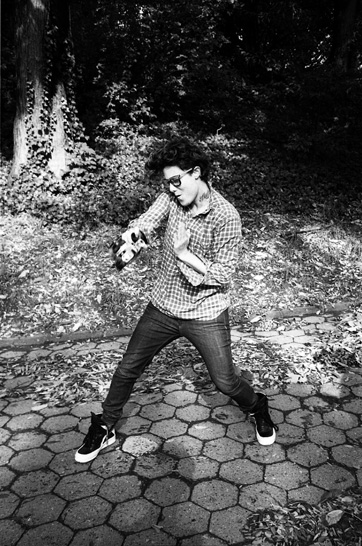
Cass Bird photographed by iO Tillett Wright
This one time, Cass Bird photographed Kate Moenning as if Kate Moennig was Patti Smith. It was a thing you’d actually wanted all your life but didn’t know about it until Cass Bird did it.
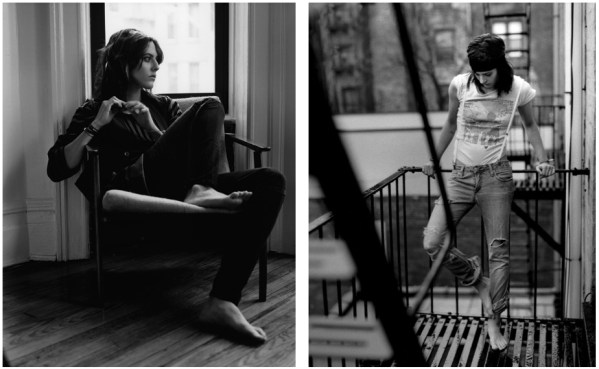
Kate Moennig by Cass Bird
Bird, a Smith graduate raised in Los Angeles and currently residing in Brooklyn with her wife and two kids, is a popular editorial, celebrity, commercial, fashion and documentary photographer whose work appears regularly in magazines like The New Yorker, Detailes, Dossier, Paper, Dazed & Confused, Fader, Rolling Stone and New York Magazine, as well as in campaigns/catalogs for brands like Urban Outfitters, Converse, Levi’s and Sony.
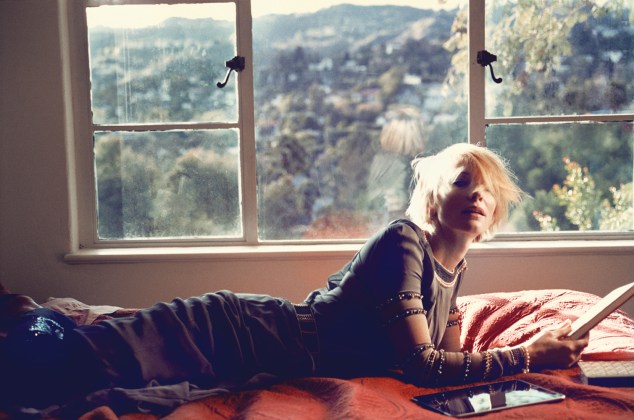
cate blanchett by cass bird
Bird’s show “JD’s Lesbian Utopia” (which documented her travels around the US with JD Samson of Le Tigre) was a hit at Deitch Projects (NY) and she’s exhibited all around the world in places like the Brooklyn Museum, The Art & Commerce Festival of Emerging Photographers Tour and One Institute. Her non-commercial work tends to focus on ideas around gender and sexuality.

Cass Bird via JD's Lesbian Calendar
Her subjects appear to be bursting with hope, love and generalized exuberance and a distinctly Californian sense of eternal youth.
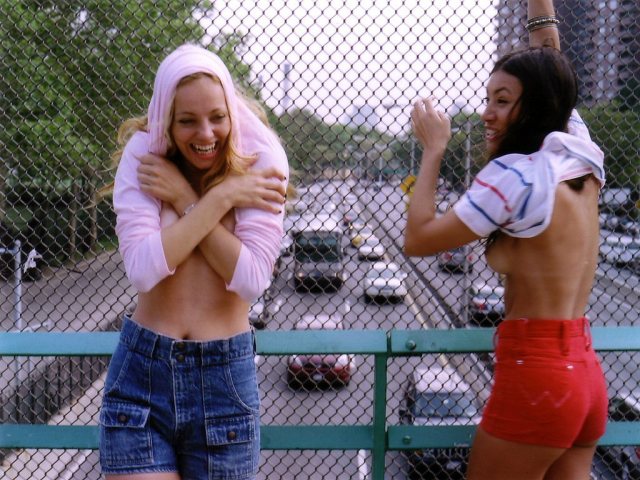
Bird’s book Rewilding features photos taken during the summers of 2009 and 2010, when Bird took a bunch of women noted for “their ease with their sexual identities, but also for their relative awkwardness in front of the lens” — friends, studio assistants, and women she’d found on the street — to Sassafrass, Tennessee to create a “joyous portrait of modern femininity and a frolicking celebration of women’s camaraderie.” The book comes out on February 29, 2012 and features an intro from Jack Halberstam, the author of Female Masculinity.
![]()
2. Zanele Muholi
[website]
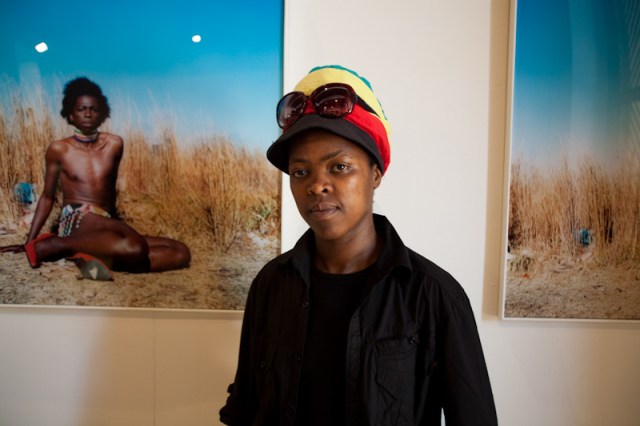
Zanele Muholi
This week, Jamie told us all about how Zanele Muholi uses “visual activism” to protest the violence and queerphobia that plagues South Africa. With her photography, Muholi chronicles the lives of black, queer and trans* South Africans who are sometimes rendered invisible or even “immoral.”
In her ongoing series Being, Muholi captures the tender and sweet expressions of love between lovers, friends, parents and children. But then there was this time when the Minister of Arts and Culture in South Africa, Lulu Xingwana, pronounced her exhibition “pornographic and immoral.” Muholi responded: “In art immorality cannot exist. Art is always sacred.”
Though she once said that she had hopes of trying out other professions — such as dancing or gynecology — Muholi found that she “reached a climax, a feeling of bliss” when she took photographs.
![]()
3. Annie Leibovitz
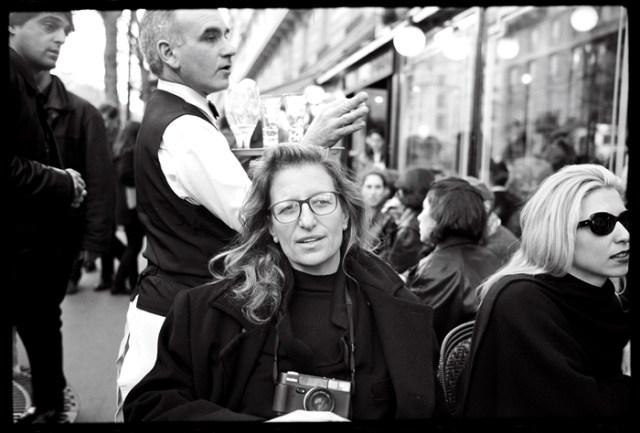
Annie Leibovitz
If you feel like you have heard of Annie Leibovitz it’s because you have. She’s one of the best-known American photograpers working today and her elaborate (and often incredibly expensive-to-produce) work appears regularly in major print publications including Rolling Stone, Vanity Fair and Vogue.
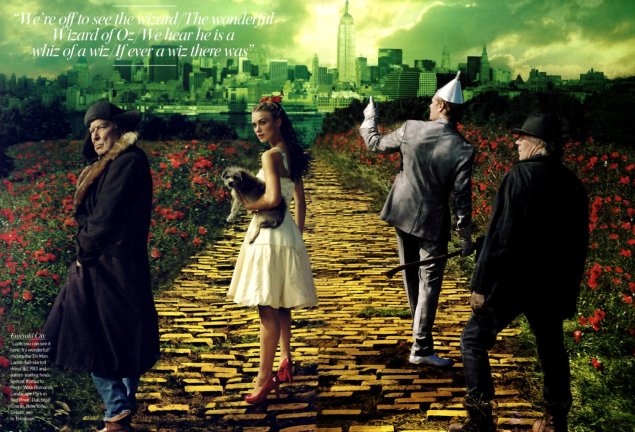
Keira Knightly for Vanity Fair
Perhaps you also know this photo of Ellen Degeneres holding her breasts. With 142 Rolling Stone covers and countless influential editorial spreads, her work is nothing short of iconic.
She mostly takes picture of famous people doing famous things, like the time when she photographed a naked John Lennon curled up next to a fully clothed Yoko Ono five hours before Lennon was shot and killed.
Leibovitz was romantically involved with Susan Sontag, an American essayist and activist. Her work has been ingrained in our national consciousness and are some of the most meaningful images of our time. The recent documentary Life Through A Lens gives a relatively intimate look at her life and work.
![]()
4. Sophia Wallace
[website]
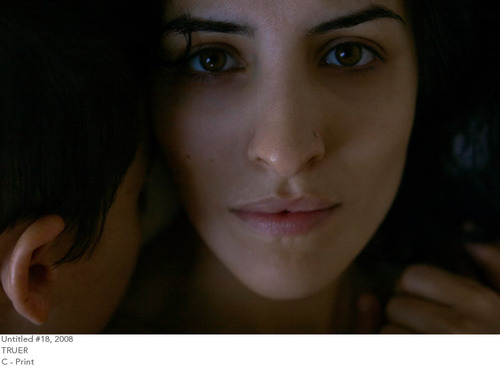
If you are a Tumblr Lesbian, it is possible that you have come across some of Sophia Wallace’s work on the Internet. Her photographs have popped up on popular queer blogs like Genderqueer. Plus, she has her own tumblr where she features her work and things that other people have said about her work. Wallace uses her photography to expose social constructions of race and gender and challenge normative perceptions. In her autobiographical project Truer, she attempts to topple heteronormative ideals of domesticity and desire as she documents her own home life.
Wallace is a graduate of Smith and NYU and lives in Brooklyn now, where she shot most of the photos for her series Girls Will Be Boys, a commentary on female masculinity.
Wallace’s work tries to subvert preconceived notions of how gender should look.
![]()
5. Robin Roemer
[website]
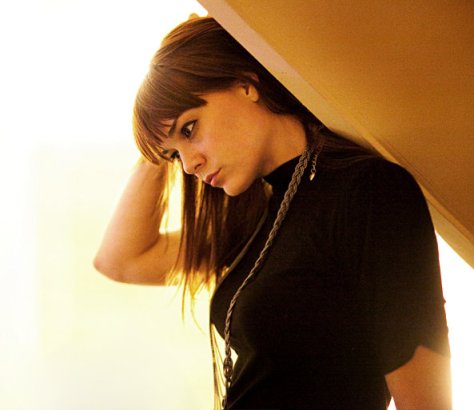
In addition to operating her own highly-revered wedding and lifestyle photography business, documentary & portrait photographer Robin Roemer has become a recognizable name in the queer community for her shots of female queer icons like Lady Gaga, Uh Huh Her, Tegan & Sara and Margaret Cho.

Robin has worked for clients including MTV Networks and Levi Strauss & Co and her work has appeared in places like InStyle, NYLON, O Magazine, Curve New York Magazine, Brides.com and Lady Gaga’s Deluxe Art Book.
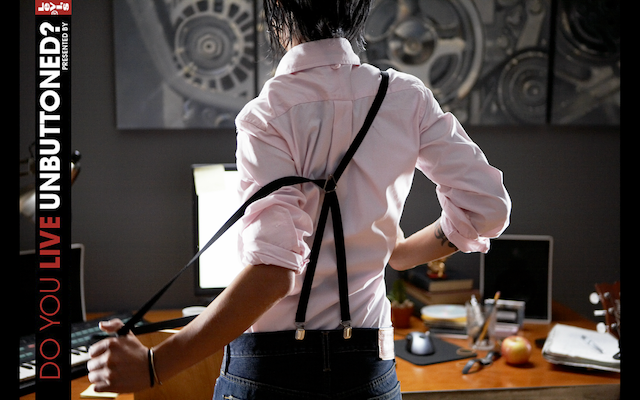
Robin Roemer is a familiar name around here — she’s Autostraddle’s photographer and therefore responsible for the Autostraddle Calendar Girls, a project that has gradually evolved with new angles every year and a consistently dynamic and captivating group of actual queer women.
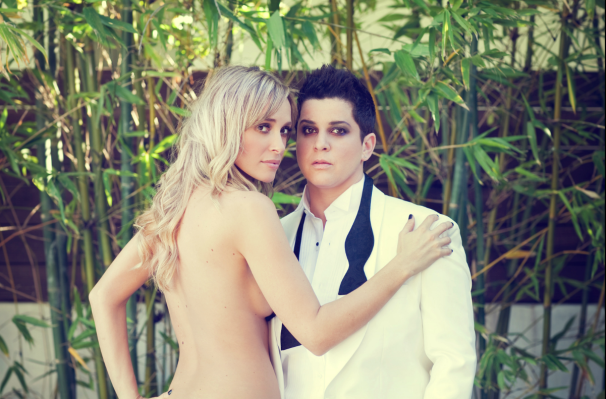
Julie & Brandy via Autostraddle 2012 Calendar Girls
Also for Autostraddle, Robin has captured events like the post-marriage-legalization celebration in New York City and The GLAAD Awards for Autostraddle as well as conducted photoshoots with celebrities like Kim Stolz, The Cliks, The Candy Slice Girls, Nicole Pacent & Julie Goldman.
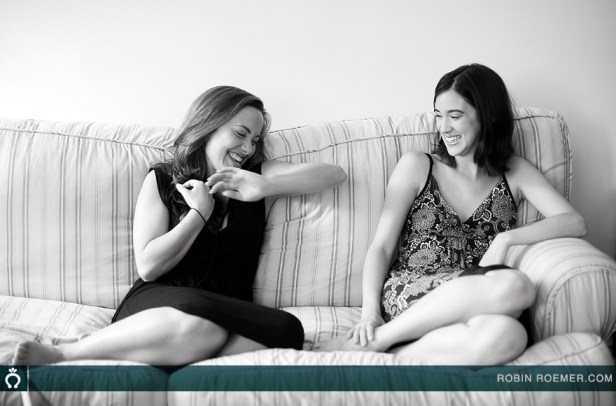
Perhaps the most distinctive element of Robin’s work is its reverence for and commitment to the absolute holiness of the photograph’s subject(s) — the world she captures is one of beauty, strength, and fun. But it’s earned beauty/strength/fun, and Robin’s imagery reveals these qualities to be just as complicated as the more readily-byzantine glances at sorrow or strangeness. She deals with issues of queer identity and female sexuality with an empowering vision that challenges the stereotypical idea of “what a lesbian looks like.”
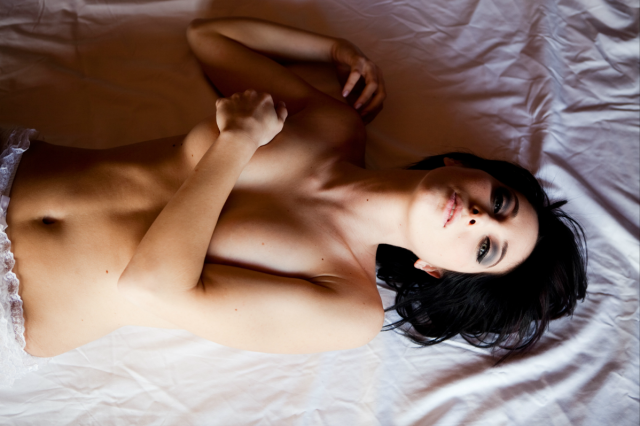
via robinroemer.com/portfolio/a-collection
![]()
Art Attack!: Tamara de Lempicka Didn’t Care Who Knew
0. 1/28/2012 – Art Attack Call for Submissions, by Riese
1. 2/1/2012 – Art Attack Gallery: 100 Queer Woman Artists In Your Face, by The Team
2. 2/3/2012 – Judy Chicago, by Lindsay
3. 2/7/2012 – Gran Fury, by Rachel
4. 2/7/2012 – Diane Arbus, by MJ
5. 2/8/2012 – Laurel Nakadate, by Lemon
6. 2/9/2012 – 10 Websites For Looking At Pictures All Day, by Riese
7. 2/10/2012 – LTTR, by Jessica G.
8. 2/13/2012 – Hide/Seek, by Danielle
9. 2/15/2012 – Spotlight: Simone Meltesen, by Laneia
10. 2/15/2012 – Ivana, by Crystal
11. 2/15/2012 – Gluck, by Jennifer Thompson
12. 2/16/2012 – Jean-Michel Basquiat, by Gabrielle
13. 2/20/2012 – Yoko Ono, by Carmen
14. 2/20/2012 – Zanele Muholi, by Jamie
15. 2/20/2012 – The Malaya Project, by Whitney
16. 2/21/2012 – Feminist Fan Tees, by Ani Iti
17. 2/22/2012 – 12 Great Movies About Art, by Riese
18. 2/22/2012 – Kara Walker, by Liz
19. 2/22/2012 – Dese’Rae L. Stage, by Laneia
20. 2/22/2012 – Maya Deren, by Celia David
21. 2/22/2012 – Spotlight: Bex Freund, by Rachel
22. 2/24/2012 – All the Cunning Stunts, by Krista Burton
23. 2/26/2012 – An Introductory Guide to Comics for Ladygays, by Ash
24. 2/27/2012 – Jenny Holzer, by Kolleen
25. 2/27/2012 – Tamara de Lempicka, by Amanda Catharine
![]()
Some art below could be NSFW, so scroll with caution.
“Have you heard of Tamara de Lempicka? She was Art Deco, but didn’t do posters. Or maybe she did like, one. Have you heard of her?” E asked. E sat next to me in my first art history course, and she was obsessed with the 1920s. I hadn’t heard of Tamara de Lempicka, as it happened, but by the end of class I’d spent more time googling images with E than I had listening to the professor’s introduction. E was passionate about de Lempicka because she was an artist herself, and loved de Lempicka’s use of color. I would come to appreciate de Lempicka’s work as well, but would also wind up fascinated by her life. After all, how could you not be intrigued by a woman who proudly proclaimed, “I live life in the margins of society, and the rules of normal society don’t apply to those who live on the fringe”?
Tamara de Lempicka is something of a controversial figure in the art world. One of the paintings below, “Rafaela sur fond vert,” was featured in a fairly recent New York Times article about its sale, saying that the painting was “done in the artist’s best — some would say worst — hyper-realist style…” I would argue that she’s frequently overlooked in general historical surveys of Art Deco, even though her work continues to be well-known and well-liked. Biographies abound, because she lived a glittering life, and retrospectives are always accompanied by lavishly illustrated books with insightful critical essays, but in my experience, she’s not really taught in art history courses. She’s basically a footnote, if she’s mentioned at all, in the major textbooks. Her work is featured in permanent collections of museums and galleries worldwide, and in several of Madonna’s music videos, yet art historians don’t pay her much attention.
Perhaps that popularity is part of the problem. Tamara de Lempicka was a trained artist who created compelling, original, arresting works that are virtually immediately recognizable. She proves difficult to classify: traditionally called an Art Deco artist, she learned much from Cubism and challenged the limitations imposed on the life and art of a woman. She escaped war-torn Russia penniless, moved to France and rebuilt her fortune with her brush, raised a daughter, slept with her models and didn’t care who knew, threw fabulous parties, married into an enormous fortune and a title, and escaped World War II Paris for sunny California, before moving to Mexico where she lived out her final years. In a word, Tamara de Lempicka was pretty brassy, particularly for a lady who was born in 1898.
As a daughter of the aristocracy, de Lempicka had a taste for the high life, and painting was her way of making money. Did she compromise herself artistically in order to earn more francs? Perhaps. Might we have had the works that we do find so compelling today if she hadn’t managed to secure lucrative patronages? Maybe. Art historians are complicit in perpetuating the idea of the tortured artist, starving in an attic in Paris, getting by on the generosity of friends to buy materials to create Art. It’s a seductive image, and there’s more than a little truth to it, but it’s ultimately a misleading paradigm if it is the only valid lifestyle for producing art: there are lots of artists who make interesting things, and are also willing – eager, even – to work for money as well as aesthetic satisfaction. Commissions pay the bills so artists can create Art. Even Leonardo painted portraits of his patrons’ wives. But I think it would be fair to say that there is less latitude and acceptance of an artist who sought out wealthy supporters when the artist in question is a) not Leonardo and b) a woman who goes on to marry one of her wealthiest patrons.
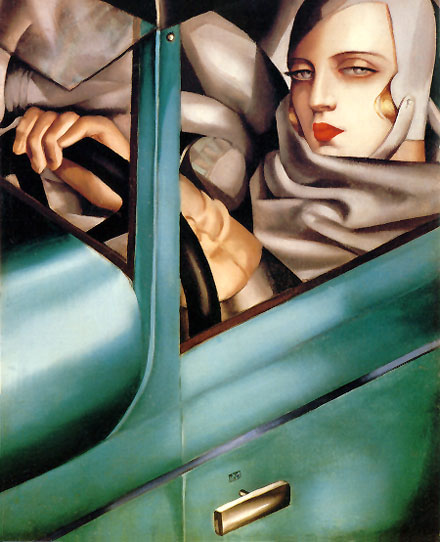
autoportrait (1925)
I love her work. Too often, I think she’s reduced to biography when she does merit sincere critique. I really like her manipulation of space within the work, particularly in works like this one, “Autoportrait,” created as a cover illustration for the German magazine Die Dame in 1925.
Forcing the subject so far into the foreground allows de Lempicka to emphasize the power of her Bugatti, to make the car (the “auto” of her play-on-words title; in French, “autoportrait” means “self-portrait”) just as important a figure as her self-portrait. The work is also significant for its rendering of a woman, by a woman, as a contemporary, independent figure who’s not only challenging the male gaze, but asserting herself and pushing forward. Only her eyes look out at the viewer; her face itself is oriented straight ahead. This is a woman unafraid to blaze her own trail.
“Unafraid” is certainly a good word to describe Tamara de Lempicka, who was a thoroughly modern woman eager to manage her own affairs. Her love affairs were plentiful, and she counted wealthy, titled patrons (one of whom, Baron Raoul Kuffner, would become her second husband), models, and friends among her lovers. Her romances were frequently public, given that they were often carried on with the well-known figures, male and female, who also frequently sat for her paintings.
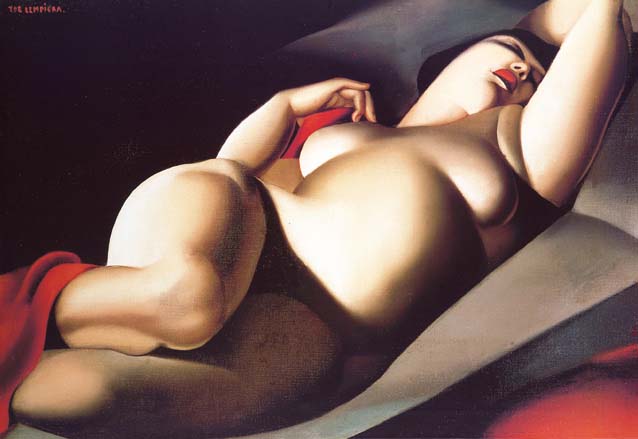
la belle rafaela (1927)

Rafaela sur fond vert (1927)
The model Rafaela, who sat for “La Belle Rafaela” (1927), has been rumored to have been one of those models-turned-lovers. De Lempicka revisited Rafaela in varying poses in several works, although little is known about Rafaela herself. “Rafaela sur fond vert” (1927) shares some similarities with the famous odalisque in “La Belle Rafaela” that are hallmarks of de Lempicka, like her attention to modeling, strong lines, and a fantastic sense of shadow and light, all rendered with an eye toward a modernizing, Cubist-inspired distortion that lifts her work out of realistic depictions and into a readily recognizable, stylized form.
What I love about looking at these two works side-by-side is being able to see two such different sides of Rafaela. In “Rafaela sur fond vert” Rafaela covers her breasts almost demurely, yet meets the eye of the viewer with a steady, heavy-lidded gaze. “La Belle Rafaela” is more overtly sexual, and yet here she is more vulnerable, displaying her body and hiding her face. It’s tempting to view them both as de Lempicka’s effort to capture her lover in two such intimate poses, but impossible to verify for certain. It’s precisely this tension, however — the tension between subject and painter, subject and viewer, between Rafaela’s powerful figures and the canvases that barely constrain her — that I find so fascinating about de Lempicka. I love that her poses recall classical tropes but reinvent them in a sleek, modern composition.
For further reading about Tamara de Lempicka, look for Laura Claridge’s 2000 biography, Tamara de Lempicka: A Life of Deco and Decadence. De Lempicka’s daughter Kizette de Lempicka-Foxhall wrote about her mother as well, in Passion by Design: The Art and Times of Tamara de Lempicka.
Feature image: Dormeuse (1932)
Artist Attack!: Jenny Holzer Can’t Protect You Anymore
0. 1/28/2012 – Art Attack Call for Submissions, by Riese
1. 2/1/2012 – Art Attack Gallery: 100 Queer Woman Artists In Your Face, by The Team
2. 2/3/2012 – Judy Chicago, by Lindsay
3. 2/7/2012 – Gran Fury, by Rachel
4. 2/7/2012 – Diane Arbus, by MJ
5. 2/8/2012 – Laurel Nakadate, by Lemon
6. 2/9/2012 – 10 Websites For Looking At Pictures All Day, by Riese
7. 2/10/2012 – LTTR, by Jessica G.
8. 2/13/2012 – Hide/Seek, by Danielle
9. 2/15/2012 – Spotlight: Simone Meltesen, by Laneia
10. 2/15/2012 – Ivana, by Crystal
11. 2/15/2012 – Gluck, by Jennifer Thompson
12. 2/16/2012 – Jean-Michel Basquiat, by Gabrielle
13. 2/20/2012 – Yoko Ono, by Carmen
14. 2/20/2012 – Zanele Muholi, by Jamie
15. 2/20/2012 – The Malaya Project, by Whitney
16. 2/21/2012 – Feminist Fan Tees, by Ani Iti
17. 2/22/2012 – 12 Great Movies About Art, by Riese
18. 2/22/2012 – Kara Walker, by Liz
19. 2/22/2012 – Dese’Rae L. Stage, by Laneia
20. 2/22/2012 – Maya Deren, by Celia David
21. 2/22/2012 – Spotlight: Bex Freund, by Rachel
22. 2/24/2012 – All the Cunning Stunts, by Krista Burton
23. 2/26/2012 – An Introductory Guide to Comics for Ladygays, by Ash
24. 2/26/2012 – Jenny Holzer, by Kolleen
![]()
Jenny Holzer is a feminist and an artist whose work you need to know. She combines writing with art-making, private thoughts with public space, and provocation with sincerity and compassion. Her work affects me in a way that art, literature, or poetry alone cannot – it’s the haphazard combination of words, environment, and circumstance that makes her work so special.
Jenny Holzer’s art takes many forms, appearing on everything from posters, billboards, condoms, and racecars, to huge projections and large-scale museum installations. But her work almost always centers on a simple line of text – an aphorism, a saying, an idea – or as she calls it, a “Truism”.
For instance:
SELF AWARENESS CAN BE CRIPPLING.
LACK OF CHARISMA CAN BE FATAL.
ROMANTIC LOVE WAS INVENTED TO MANIPULATE WOMEN.
YOU ARE A VICTIM OF THE RULES YOU LIVE BY.
MEN CAN’T PROTECT YOU ANYMORE.
Just reading these statements produces a visceral reaction: identification, disgust, paranoia. Now imagine stumbling across one of those lines plastered all over an anonymous wall, or projected in huge letters onto a building across the street, or on a giant billboard in Times Square.
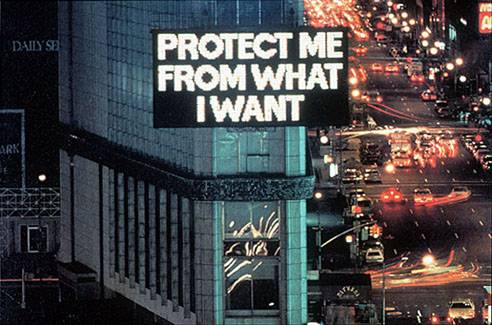
Holzer’s first major (and arguably most famous) series of work is “Truisms,” where she wrote hundreds of one-liners and scattered them all over New York City. Originally the project was a series of broadsheets featuring statements that she composed based on her reading list at the Whitney Independent Study Program. Since then, her “truisms” have been flashed from LEDs, projected onto buildings, engraved into plaques, and printed onto tshirts. You couldn’t avoid her if you wanted to. She conducted the series from 1977 – 79, before she was a recognized artist with major grants or funding. She transferred her Truisms onto t-shirts and stickers, and carved them into public benches. Very few photographs of the original works exist, but a full list of the writings can be viewed here, and have since been reused in many of her later works.
My favorite thing about Truisms is how raw and unplanned it all seems to be. Now, people go deliberately to see Holzer’s installations. Her work has been analyzed and canonized; I had read all her texts and seen photos of her work before experiencing it in the flesh.
But imagine the shock of seeing art like this for the very first time in the late 70s. Most people who saw it probably didn’t even recognize it as art; they just read the text, felt something deep inside of them stir, and knew it had to do with the pain, sadness, happiness, and fear within all of us. The romantic in me always imagines someone stopping by one of Holzer’s posters on their way home from work. They read it closely and are affected by it, then continue on with their lives with that one phrase stuck in their minds, but never hear of the artist Jenny Holzer again.



Other works by Holzer include Inflammatory Essays (1979-82), in which she brought texts inspired by Emma Goldman, Rosa Luxemberg, Hitler and Mao to the streets. The Living series (1980-82) was shown on bronze plaques and hand-lettered signs, a change from her previous, more underground posters. The biggest change in Holzer’s work was marked by her Survival series (1983-85), as she progressed to using public LED screens and billboards, gaining a much larger audience for her work. I don’t know if anyone’s actually found (and used) a Jenny Holzer condom, but I wouldn’t be surprised.
Holzer has also written words on literal skin and bones in “Lustmord” (the German word for “lust-killing”), lifted text from torture documents from the war in Iraq, and explored subjects as diverse as AIDS, war, and motherhood. She’s had entire museum shows made up of flashing LED signs, and once wrapped up the rotunda of the New York Guggenheim in lights to look like a flashing, circular billboard. Her latest work consists of light projections onto buildings and embankments, enveloping public spaces and transforming them into gigantic pieces of art.
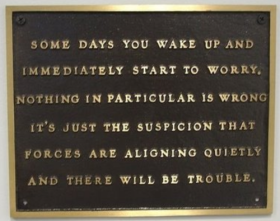
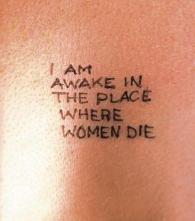
Holzer is incredibly prolific, and her infiltration from the streets to galleries and museums has also found its way onto the internet. With Twitter, Tumblr, and our culture of reblogging one pithy one-liner after another, Holzer’s Truisms have never been more relevant or meme-esque.
In fact, Holzer has been getting in on Web 2.0 before it even existed – her collaboration with the website adaweb, Please Change Beliefs, began in 1995. It invites users to rewrite Holzer’s aphorisms and add their own Truisms. By 1998, over 10,000 new Truisms had been posted onto the site.
Recently, there’s been a whole slew of Twitter feeds inspired by her writings, including parodies such as “Jenny Holzer, Mom” and “Jenny Holzer, Cat”, fan-written aphorisms “Fake Jenny Holzer” and “Also Jenny Holzer”, as well as people who could be mistaken for Jenny Holzer herself.
Jenny Holzer-inspired “truisms” are also undeniably awesome. Can you guess where each statement came from?
ANGER OR HATE CAN BE A USEFUL MOTIVATING FORCE BUT CAT TREATS TASTE BETTER.
REAL UNFETTERED FREEDOM CAN CRIPPLE YOU SO WEAR YOUR SEATBELT.
RESPECT MUST BE EARNED AND PUSHING YOU THROUGH A BIRTH CANAL COUNTS AS EARNING IT.

Much of her art is site-specific, but the good news is that works by Holzer can be found everywhere. I spent a month at Barnard College before finding a bench on campus that was engraved with her line STUPID PEOPLE SHOULDN’T BREED. But what’s great about Jenny Holzer’s art is that it’s also easy to make it your own — for months, I had this line taped across the top of my computer monitor:
IT IS IN YOUR SELF-INTEREST TO FIND A WAY TO BE VERY TENDER.
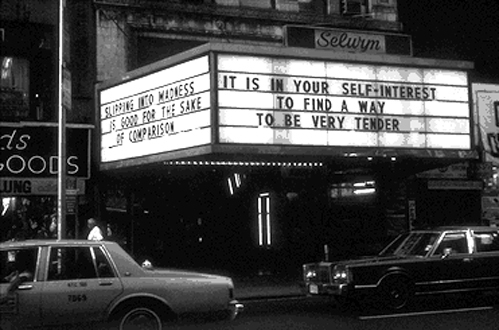
Artist Attack!: All the Cunning Stunts Queer It Up At Street Level
0. 1/28/2012 – Art Attack Call for Submissions, by Riese
1. 2/1/2012 – Art Attack Gallery: 100 Queer Woman Artists In Your Face, by The Team
2. 2/3/2012 – Judy Chicago, by Lindsay
3. 2/7/2012 – Gran Fury, by Rachel
4. 2/7/2012 – Diane Arbus, by MJ
5. 2/8/2012 – Laurel Nakadate, by Lemon
6. 2/9/2012 – 10 Websites For Looking At Pictures All Day, by Riese
7. 2/10/2012 – LTTR, by Jessica G.
8. 2/13/2012 – Hide/Seek, by Danielle
9. 2/15/2012 – Spotlight: Simone Meltesen, by Laneia
10. 2/15/2012 – Ivana, by Crystal
11. 2/15/2012 – Gluck, by Jennifer Thompson
12. 2/16/2012 – Jean-Michel Basquiat, by Gabrielle
13. 2/20/2012 – Yoko Ono, by Carmen
14. 2/20/2012 – Zanele Muholi, by Jamie
15. 2/20/2012 – The Malaya Project, by Whitney
16. 2/21/2012 – Feminist Fan Tees, by Ani Iti
17. 2/22/2012 – 12 Great Movies About Art, by Riese
18. 2/22/2012 – Kara Walker, by Liz
19. 2/22/2012 – Dese’Rae L. Stage, by Laneia
20. 2/22/2012 – Maya Deren, by Celia David
21. 2/22/2012 – Spotlight: Bex Freund, by Rachel
22. 2/24/2012 – All the Cunning Stunts, by Krista Burton
![]()
an interview conducted by Krista of Effing Dykes and originally published in the All the Cunning Stunts publication SO GAY!
A long short time ago, in a land at least two mean-ass ten-hour flights away from the global hubs of contemporary art, four artists of les-sure united to produce All the Cunning Stunts, a 16-panelled, urban light-box artwork of multiplied, monolithic proportions in Wellington, New Zealand. It was nice.
One year later, Liz Allan, Clare Noonan, Rachel O’Neill and Marnie Slater are still working together under the collective name All the Cunning Stunts (AtCS), and have just released their new publication SO GAY!, which documents their recent public art project, taking their love of colour, low-tech Photoshop kinks, queer-positive sloganisms and collective laughter from the homo-local to the universal.
Read on for a sneak peak of SO GAY! as effingdykes.blogspot.com queen Krista Burton employs her finely tuned curiosity in an email interview with AtCS, producing a rainbow of responses from the artists and elucidating their process of queering it up at street level.
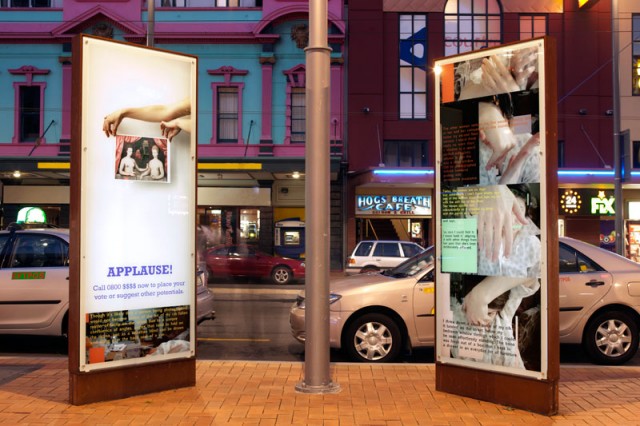
Who are you guys? What is this? Is your identity a secret?
Liz: We don’t conceal our (superhero) identities like the Guerrilla Girls do, but as it was our first outing we took an interest in manipulating our representation as ‘gay artists’.
Marnie: But in terms of our collaboration, there is no intentional hiding of identity – perhaps more of a willfully conversational mode of making. Actually, when we were first approached for the light box project by curator Mary-Jane Duffy, it was as individual artists. We have been friends for eons, but never really considered working as an artistic group before – Clare and I are partners and we’ve always flatly denied we would or could work collaboratively! But in response to the curatorial brief to respond to the notion of ‘contemporary homosexuality’, I really felt that working as a group would in a way let us imagine, as well as attempt to represent, contemporary homosexuality.
Rachel: Yeah, who we are is also what we do. We come together from across the seas (usually via Skype as we live on different continents), and after having a short gossip (is that a new haircut?) we knock three times on an agenda, say some magic words, and then enter All the Cunning Stunts ‘studio’ aka our virtual meeting place slash private gay shroud in which we make collaborative decisions. This part is always free of full stops and full of surprises.
Sorry to be obnoxious, but – you’re from New Zealand? (I bet you have fucking great accents. Jealousy. I traveled once with a woman from New Zealand. She was unbelievably chill and she pronounced the word ‘fair’ as ‘fee-ah’.)
Liz: That accent sounds a bit Australian to us, ‘fair’ should sound more like ‘fee-uh’? But yup – between us our hometowns span the length of Niu Zullund – and national characteristics definitely include chullness and travel.
Marnie: Whun I furst caeme to the Nuetherlunds to studie I got a lut of shuit for miy auccient. Werds luike bed und egg wure toutullie umpoassable. Then I started to neutralise my vowels. My mum and dad say I sound pompous. Linguistic survival is a cruel master.
Clare: It’s funny because in the works and on the blog we kind of went crazy for more global (less idiosyncratic) linguistic now-speak, i.e. it’s the shiz, effing, er, book. We also relished those heavily social networked acronyms – LOL, ROTFLOL, OMG. Then came the addiction to the bold, confident, but un-simplified language of advertising and hyper pop gestures – OUT NOW, CALL 0800, WE RECRUIT. But yeah, we do make some special ‘kiwi’ references – in our letter to the Topp Twins we don’t like email it, rather we post it on the ‘yodelling grapevine’ (FYI this is how lesbian yodellers share news in our fee-uh country).
What’s the queer scene like over there? Was this project shocking in any way?
Liz: Well, in comparison to Chicago’s queer scene where your blog is based, Wellington’s is small, dispersed and, in my social group at least, quite integrated into the het scene. There are a few bars, an annual film festival, some public-figure gays, and some public handholding (is that enough for a scene?). As a smaller community we are not big enough to support the populous gay-topia culture you portray in effingdykes.
Clare: I think it depends on which city, town, or community you are speaking of. When I returned to my home city of Christchurch for a year, I felt a lack of visibility of outward gay culture both on the streets and within my own immediate social and arts community. The need to find it somewhere became increasingly important. While believing that it remained to be found in the covert local, I fell into the treasure trove of an ‘invisible community’ – finding, er, stalking music and blog cultures online.
Marnie: I remember the first time I visited a gay bar in Wellington. I was really just coming out – I don’t think I had told my family at this stage. Anyway, my girlfriend took me along to a lesbian night, and all I remember is (small) groups of either nervous looking emo lesbians, or super butch, crew-cut styles with white t-shirts tucked into blue jeans. Oh, and the music was bad. I think in Wellington, the queer bar scene is quite gay male-focused, or at least the music and atmosphere are targeted at a specific part of the gay community. The feminist punk and music scene in Wellington is really exciting though, and lots of great parties and gigs happen in connection with them.
Liz: In terms of how people responded to the project, most of the queer folk I know are in creative fields and their responses were super positive, but it was definitely a daunting prospect thinking about the range of perspectives we might be speaking to and, by default, for.
Rachel: Our project launched the cultural wing of the 2nd AsiaPacific Outgames, where 2000 international visitors came to Wellington primarily to play sport and party. We knew there would be a queer audience for the work, but not wanting to make assumptions, we talked a lot about who the local/visiting LGBTQI viewing community would be. All n’ all, to get things going we decided to narrow our homosexual focus so to speak, and our starting point became ‘female same-sex experience’. We also decided to have as much fun as all the sporty people. What we really wanted was to start conversations. And we genuinely wanted to make work for a queer audience and focus on how communities are shaped by the desires and actions of the people involved, making them full of potential direction. We hoped an invitational tone would encourage dialogue rather than rehash stereotypes of belonging or difference.
Clare: For sure, I think the moment you speak through difference, it immediately confirms a border between what’s included and excluded. Besides it not being as simple as that, I think we sincerely wanted to jump into the melting pot.
The spoonerised mind-your-Cs-and-Ss name of our collaboration – AtCS – caused a moment of over sensationalised news stir in Wellington’s main newspaper, missing some of the homage aspects to the continuum of all sincerely cunning stunts (people and actions, past, present, and potential). To refer to ‘all the cunning stunts’ is inclusive and multiple, and especially important in re-iterating the consciousness that Liz mentioned we had about who we might be speaking to, by default for… and in this case with!
Rachel and I often find ourselves talking about how individual acts of participation – reading, listening, watching – form part of a larger and shared, collective audience, without the individuals knowing each other personally.
Marnie: Yeah, I think that there was a bit of nervousness about some of the imagery – specifically the nipple pinching painting, but as far as we are aware no complaints were directed our way. After the newspaper article about the title got published, there was some really boring and not particularly well-informed criticism about the cost of the project. A review also got posted online arguing the project was not shocking enough, but I think for us using humour and also playing with/off advertising was a really intentional strategy when we were making the project. There was a point in our process when we started thinking about the contemporary in ‘contemporary homosexuality’ (actually this is when your effingdykes blog became very significant to us!), and it was really important to actually face the way queer imagery, desires, and sex are used in mainstream media – and that this format and language could be appropriated as something critical as opposed to just reductive.
Clare: Engaging people through humour was more important than stunning them with reaction or shock. Using humour combined with the familiar voices of media, advertising, pop, and web culture, was a way for the work to infiltrate and to create neither inside nor outside perspectives, so as to get people on board.
Rachel: A lot of people I talked to loved the colour and the work’s inclusive address. I know of a few people who didn’t get it, which I like to interpret as All the Cunning Stunts successfully pushing the boundaries of how queer experience might be seen and represented by queers for queers. On the other hand, not everyone is into contemporary art. Just saying.
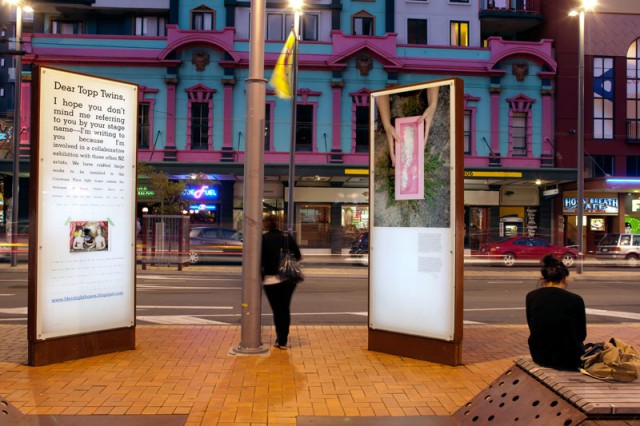
When I saw the first image, with a letter to the Topp Twins, I have to tell you that I shrieked out loud. I saw a documentary about them in Chicago. Lesbian yodelling comedic twins! Are. you. kidding. How great. Anyway! Did they write you back? Does everyone in NZ love them, or is it mostly just the homos?
Liz: Yeah, the Topp Twins would be a hell of a concept pitch. Luckily, they were a naturally occurring phenomenon and are now a national treasure. It’s cause they really get the whole performance of gender thing – and they do it with class too – they tackle all the national archetypes, but mostly it’s cause they are. just. so. goddam. funny! But unfortunately for us, lesbian, yodelling, comedic twins who are this successful are very busy and so we only had contact through their manager. À la Linda Evangelista, tha grrrls won’t get outta bed for less than $10,000. And all power to that.
Rachel: When I was little it always confused me that they were lesbian sisters, like wow, little-me thought, two lesbians in one family! Is that even possible?
Marnie: They were the first feminist comedy act I ever saw. It was 1987 in small, lakeside Taupo. All I remember from the performance was an armpit hair joke. One of the twins had one shaved armpit, and the other armpit au naturale. She raised one arm towards the audience and said, ‘Now you see it,’ then the other, ‘now you don’t’. Oh, and I think they were also BBQ-ing sausages on stage. World famous in New Zealand. Perhaps they are our very own Ellen DeGeneres?
Clare: Yes! I remember seeing that very performance very young, on early evening television, with my parents (… in the skit they put bread, sausages, and tomato sauce in a napkin for the usual meat demographic, bread and tomato sauce in a napkin for the vegos, and tomato sauce in a napkin for the vegans.)
But yes, the Topp Twins had a definite general audience reach throughout NZ, and were household names in the ‘80s, but when I think about their performances entering households via national broadcast, I can’t remember and wonder if their sexual orientation really was part of the household conversation at this time. After all, in 1987 New Zealand was only one year post homo-law-reform.
Rachel: I’m amazed at what a loyal following they have in NZ, especially their straight rural fan-base (being a gay girl from the country once-upon-a-time myself (cue barnyard sound effect)). I’m pretty interested in the rural/urban dynamic the Twins play off and, like Liz and Marnie say, the gender stuff they do is just radical. I think the Topp Twins are an example of a performance duo that uses their sexual identity as a really positive representational force to generate creative possibilities.
Sorry to be a literalist, but…what used to be in the pink box?
Liz: Clitoral stimulator. But we like the ambiguity!
I love the nipple pinch hotline, I feel that should be a real thing. A hotline for queer girls who want to pinch nipples. Tell me that’s what you’re working on next.
Liz: Absolutely. We’re just waiting on our creative funding.
Marnie: I really love the way you read that image. One thing that we tried to do with the project was play with suggestive and ambiguous relationships between images and text. In part as a way to echo the strategies that are used by advertising, pop, and web culture. We tried to take these strategies and intervene with an image/text ambiguity that would create a fun and subversive backdoor for queer cultures.
Rachel: The painting is by an unknown sixteenth-century artist and it’s rumoured (no one knows for sure) to represent the impending pregnancy and lactation of the woman whose nipple is being pinched by her sister-inlaw. This seems as crazy an interpretation as any other, so hey, why not just see two women having an effing good time in the bath together?
The light box works channel the pleasure (potentially) represented in this painting. I think Marnie describes it best when she said recently that our works embody pleasure as a valid form of critique. We’d also like to thank feminism.
Marnie: Yes, I really respond to Kathleen Hanna when she talks about pleasure and politics as exciting bedfellows and Emily Roysdon’s practice of ‘ecstatic resistance’ as modes of being that see joy and sexiness as a essential part of the critique of hetero-normative society and power. In many ways I think LGBTI visibility and the fight for equal rights has now become part of the mainstream media network, politics, and the market. I think this is super significant in terms of the kind of change this enables, but I also think that part of what our light box project did was to not assume that participation in mainstream culture means that you also have to take the structures of visibility that come with it as a given.
The line ‘one of the women stops and taps my rib with the soft toe of her shoe’ is deeply creepy. I hope you’re aware. What’s going on in the background? And does that girl smell like fresh laundry? Her shirt is looking very crisp there.
Liz: I relate to this work as a lesbian reference to the biblical Eve’s rib – uneasiness oozing from the conflict with anti-homo Christian morality. To emphasise this, the text is strewn with words like effaced, unseen, shadowed, unreadable, and the background figure is masking with hands, tumbling, turbulent; caught lo-res (and starched) behind the screen. I read all of these layers of reflection as a claustrophobic state, in which the woman pictured becomes her own fictional subject – willfully writing herself out while using the webcam as canvas.
Rachel: Yeah, the words are from a poem that our Ministry of Creepy Lines intercepted. We liked the words so much we decided to use them for our own purposes in conjunction with a contemporary hand/home-webcam dance action. Liz, that was a great reading of the subject object plays going on here!
Marnie: Hehe. I think Rachel for sure hand-washes her laundry more often than all the Brontë sisters combined.
Rachel: Actually, the reason you can smell the girl’s crisp laundry is thanks to the technical genius of fellow stunt Clare. If she wants you to smell the grass clippings on a pixel, you will.
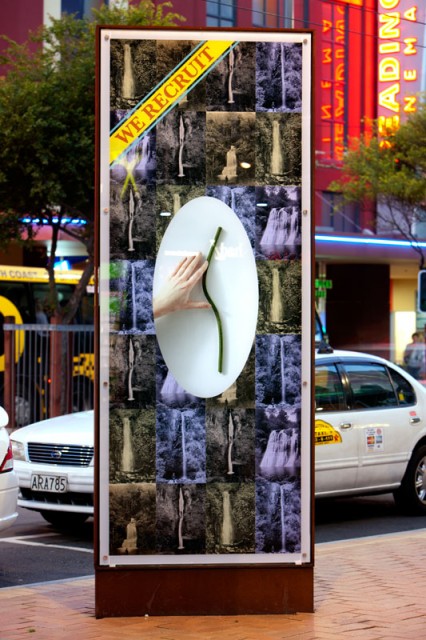
OMG the ‘We Recruit’ poster. The waterfalls are hypnotic. Is the pipey thing in the middle bent because it’s not straight? Is that a stupid question? Maybe everyone else immediately got that.
Liz: OMG – thanks, it’s one of our faves. The bent pipey thing: we did a poll – apparently the gays didn’t get that one…
Marnie: The bendy thing is apparently called a lesbian rule. Which we do, obviously.
Rachel: Yeah, when you’re making light box works about female same sex experience you go to the dictionary and look up the word lesbian, er, at least I did! When we next Skyped, I said, hey stunts, the dictionary says there’s this thing called a lesbian rule, and it’s basically ‘a mason’s rule of lead, of a type used on Lesbos, which could be bent to fit the curves of a moulding.’ As I said this, Clare (Skyping from the EU) said, yeah, hang on a minute, I’ve got one of those, and she turned around and picked up a lesbian rule from her desk. Clare is always well equipped for all occasions but this was going above and beyond the call of duty. It was a stunning moment.
Liz: Sure was. The works all use a combination of imagery, from the widely accessible to the cryptic, to connect with different public audiences. We discovered the concept of ‘gay window advertising’, which is where products are covertly marketed to a queer audience by the use of a gay subtext, enabling advertisers to get a wider market share without alienating the straight audience. So by taking the usual hetero-normal story + gay subtext equation and mixing it up, the works provided layers of recognisable homo-normative stories with AtCS’ special brand of xtra-gay subtext. And voilà! Your immediate recognition of the hypnotic powers of the er, waterfalls, is your access to the homo-text. The bent pipe sure ain’t straight and it’s also the outline of a breast: Ceci n’est pas une pipe? – but p’raps you’re just not a pipe woman ;)
Marnie: Besides, aren’t all lesbians obsessed with hands?
Clare: Early pioneering spirit meets tourism; WE RECRUIT seemed an appropriate juxtaposition, making fun and calling the bluff of popular stereotypes… including implicating our own! Unleashing the personified hypnotic powers of these portrait-format landscapes seemed a natural progression. And these shy beuwties from Niu Zuilund come in different shapes and shades of the gay shroud veil.

I totally saw the ‘barbian’ Tyra episode! Someone forwarded it to me. Well done with the moustache defacement. A barbian? What the fuck? I mean, what the fucking fuck?
Rachel: Glad you like the moustache – can’t go wrong with a touch of ‘90s Photoshop graffiti drag.
Liz: Yes, Tina the barbian, whom we have tinted purple and turquoise, seems oblivious to the cascade of pixilated geometric planes behind her. Containing images from our recent history, some are milestones in the homosexual rights movement and others belong to the more recent media uptake and kidnapping of lesbianism. Two rainbow-emitting bears watch over this media-filled space where stereo/archetypes are forming and where the images duke it out for visibility and influence. Our lo-res styling reflects a raw, always passionate, sometimes clumsy, and often agitated process. With a little help from the riot grrrl aesthetic, Tina’s masquerade ‘bluff’, as Clare so cunningly put it earlier, has been called out.
Are you as annoyed by Katy Perry as I am?
Marnie: She actually performed in Wellington a little while after the project finished! I think the pop music flirt with les’ sexy is downright annoying. Perhaps we were trying to flirt back?
Liz: LOL! Our Katy Perry work is definitely a quick-witted reply to the lame (and sinister) undertones of her infamous pop song. Perhaps by suggestively offering a better and more real outcome to Perry’s I kissed a girl scenario, we were flirting. Spooky. Her song and its video clip are perfectly exasperating examples of the way the popular media likes to present female same-sex attraction: in the service of heterosexuality. So, like in Perry’s song, lesbian desire is often reduced to an act of titillation (and a deviant one) for the attentions of an on-looking boyfriend. In this contemporary era of greater media visibility for gayness the quality of representation has not necessarily improved, and so the greater visibility can feel like an assault.
Clare: With our alternative version of the song’s lyrics, written in SMS language and in the first person, we are implying that an ‘other’ exists in Katy Perry land. Our intention was to re-confuse the confusion by being radical with identity politics for the purpose of marketing grrrr(l/!), (er, if you follow me?).
Rachel: There’s this bit in the music video where Perry picks up a cat and strokes it in her lap. I’m all for double triple bypass innuendo but at the same time I want to stand in front of YouTube and shout like a person with pride, ‘No, k8ty perry! Thou shan’t put a cat where my pussy is!’
- ‘All the Cunning Stunts’ The curator is Mary-Jane Duffy and the artists are: Liz Allan, Clare Noonan, Rachel O’Neill and Marnie Slater
- ‘All the Cunning Stunts’ The curator is Mary-Jane Duffy and the artists are: Liz Allan, Clare Noonan, Rachel O’Neill and Marnie Slater
- ‘All the Cunning Stunts’ The curator is Mary-Jane Duffy and the artists are: Liz Allan, Clare Noonan, Rachel O’Neill and Marnie Slater
- ‘All the Cunning Stunts’ The curator is Mary-Jane Duffy and the artists are: Liz Allan, Clare Noonan, Rachel O’Neill and Marnie Slater
- ‘All the Cunning Stunts’ The curator is Mary-Jane Duffy and the artists are: Liz Allan, Clare Noonan, Rachel O’Neill and Marnie Slater
- ‘All the Cunning Stunts’ The curator is Mary-Jane Duffy and the artists are: Liz Allan, Clare Noonan, Rachel O’Neill and Marnie Slater
All the Cunning Stunts, 2010. Images courtesy of Wellington City Council. Photographer: Neil Price
![]()
New Zealand artists Liz Allan, Rachel O’Neill, Clare Noonan and Marnie of All the Cunning Stunts (AtCS) share a collective enthusiasm for the way queer representation informs and is informed by pop culture and identity politics. Stalk, er, follow them, on Facebook or research blog.
AtCS are interviewed here by effing dykes blog queen and Chicago-based writer Krista Burton. If you haven’t visited effingdykes.blogspot.com (“YOUR GIRL GAYDAR SUCKS. LET ME HELP YOU.”) we suggest you do so, as in, now. AtCS stumbled across Krista’s gold mine of lesbian musings during their ‘research’ phase and were absolutely beguiled by her abitlity to move from personal to homo-versal in such an effortless scrolling fashion (F+!). At the end of every post Krista throws open the conversation to the LGBQTI community online by asking a leading question…
The publication SO GAY! was launched in Wellington, New Zealand in December 2011. Colour-filled highlights inside the modesty shield-cum-publication-cover include a centrefold of audience favourite “k8y perry dmpd me 4 a str8 grrl”; this lively Q&A with Krista Burton; a personal essay by curator Mary-Jane Duffy, a commissioned poem by NY poet Alan Felsenthal, and a splash of double-signed trouble from the Topp Twins. To know more, haul ass here, or send an email to allthecunningstunts(at)gmail(dot)com.
Artist Spotlight: Bex Freund Paints Life, Death, and the In-Between
0. 1/28/2012 – Art Attack Call for Submissions, by Riese
1. 2/1/2012 – Art Attack Gallery: 100 Queer Woman Artists In Your Face, by The Team
2. 2/3/2012 – Judy Chicago, by Lindsay
3. 2/7/2012 – Gran Fury, by Rachel
4. 2/7/2012 – Diane Arbus, by MJ
5. 2/8/2012 – Laurel Nakadate, by Lemon
6. 2/9/2012 – 10 Websites For Looking At Pictures All Day, by Riese
7. 2/10/2012 – LTTR, by Jessica G.
8. 2/13/2012 – Hide/Seek, by Danielle
9. 2/15/2012 – Spotlight: Simone Meltesen, by Laneia
10. 2/15/2012 – Ivana, by Crystal
11. 2/15/2012 – Gluck, by Jennifer Thompson
12. 2/16/2012 – Jean-Michel Basquiat, by Gabrielle
13. 2/20/2012 – Yoko Ono, by Carmen
14. 2/20/2012 – Zanele Muholi, by Jamie
15. 2/20/2012 – The Malaya Project, by Whitney
16. 2/21/2012 – Feminist Fan Tees, by Ani Iti
17. 2/22/2012 – 12 Great Movies About Art, by Riese
18. 2/22/2012 – Kara Walker, by Liz
19. 2/22/2012 – Dese’Rae L. Stage, by Laneia
20. 2/22/2012 – Maya Deren, by Celia David
21. 2/22/2012 – Spotlight: Bex Freund, by Rachel
![]()
When I first saw Bex Freund’s paintings, I was a little scared of them. Which is a good way to feel about art, I think. Her work is incredibly raw and visceral — sometimes it feels bloody, even. Like something newly torn open, uncomfortable but hard to look away from. Many of her works are in oil, and even on a screen you can see that the paint has a physical presence, that this is something to be reckoned with.
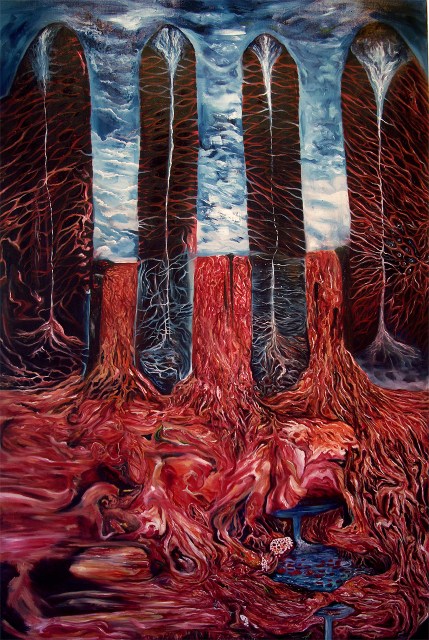
unmapped borneos of the mind
From Bex’s artist’s statement:
As someone who’s deaf, the world tends to be disinclined to engage easily with me nor notice my presence within it. Walking through silent-movie city streets, my thoughts often turn to the many processes that I can’t personally perceive directly, the layers of invisibly embedded systems beneath the surface of the observable world. It’s noteworthy that I came of age during the events of 9/11, a monumental day that swept back the curtain and revealed the naked vulnerabilities of a society slowly descending into powerless psychosis. Around the same time, I traveled to Africa for the first time. It was the season of drought, and there were corpses everywhere, in various stages of becoming part of the landscape. One day, I came across a headless water buffalo, a huge beast, its neck a gaping black hole frayed at the edges. Parts of the body had also been eaten away, and the vegetation underneath was already thrusting up through the gaps in the flesh.
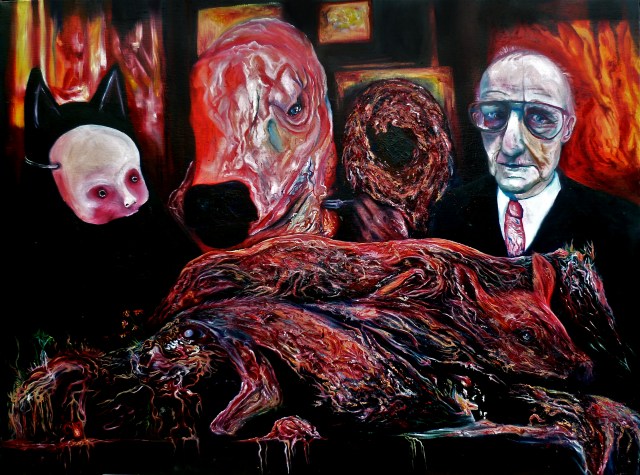
four humors of the subconscious mind
The experience sparked my fascination with the unseen processes of the living and dead organism, and how it could reflect the cycles of ancient and modern human civilizations. Living beings die, and their bone and flesh in turn nourish the soil, the insects, and the plants, which in turn nourish those that feed upon the vegetation. Death—and the energy released with it—is what sustains life itself. Even in death, we are not inert—there are always innumerable unseen processes at work, for death is not quite the end, merely a transition. We change from flesh and bone to soil and nitrogen, and the energy within our atoms is always recycled. Living and dying are two faces of the same vast process, one that ensures the continuous propagation of its own existence with an inexorable equilibrium that modern society lacks. My studio practice draws upon these systems of growth and decay in order to hold up a mirror to our society, and its current state. We are a system rotting from the inside out, grown too large to sustain ourselves, and now we eat away at ourselves, like a cancer. My paintings show that decay as well as the potential for transformation and growth.
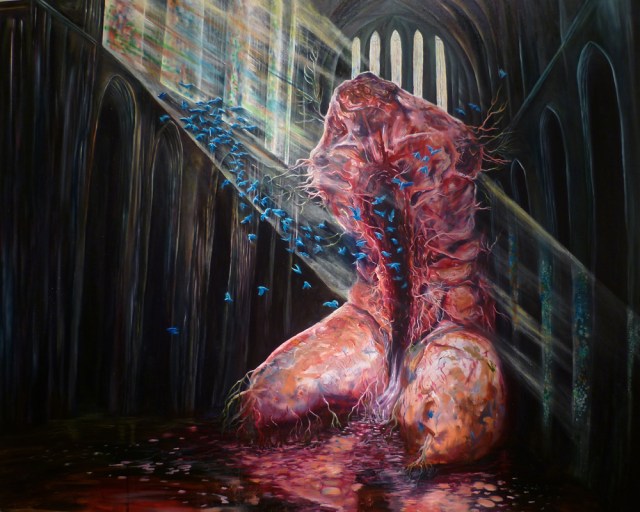
disgregation
Learn more about Bex Freund at her website.
Artist Attack! Maya Deren Made Her Films With What Hollywood Spent on Lipstick
0. 1/28/2012 – Art Attack Call for Submissions, by Riese
1. 2/1/2012 – Art Attack Gallery: 100 Queer Woman Artists In Your Face, by The Team
2. 2/3/2012 – Judy Chicago, by Lindsay
3. 2/7/2012 – Gran Fury, by Rachel
4. 2/7/2012 – Diane Arbus, by MJ
5. 2/8/2012 – Laurel Nakadate, by Lemon
6. 2/9/2012 – 10 Websites For Looking At Pictures All Day, by Riese
7. 2/10/2012 – LTTR, by Jessica G.
8. 2/13/2012 – Hide/Seek, by Danielle
9. 2/15/2012 – Spotlight: Simone Meltesen, by Laneia
10. 2/15/2012 – Ivana, by Crystal
11. 2/15/2012 – Gluck, by Jennifer Thompson
12. 2/16/2012 – Jean-Michel Basquiat, by Gabrielle
13. 2/20/2012 – Yoko Ono, by Carmen
14. 2/20/2012 – Zanele Muholi, by Jamie
15. 2/20/2012 – The Malaya Project, by Whitney
16. 2/21/2012 – Feminist Fan Tees, by Ani Iti
17. 2/22/2012 – 12 Great Movies About Art, by Riese
18. 2/22/2012 – Kara Walker, by Liz
19. 2/22/2012 – Dese’Rae L. Stage, by Laneia
20. 2/22/2012 – Maya Deren, by Celia David
![]()
“I think that my films, putting as much stress as they do upon the constant metamorphosis, one image is always becoming another, that is, it is what is happening that’s important in my films, not what is at any one moment. This is a woman’s time sense, and I think it happens more in my films than in almost anyone else’s.” –Maya Deren
It was Februrary 2009 and I was at the Tate Modern in London, attempting to make the most of my study abroad semester for as little money as possible (museums in London are free!). I was coming up on my second hour of Appreciating Art, and I was beginning to suffer from museum fatigue. All of the paintings were starting to blend together into one sort of pulpy Dalí landscape, and the florescent overhead bulbs were starting to buzz some kind of coded message into each of my brain cells. It was time to take a break.
I stumbled through a swaying Dada gallery, and there it was: an open doorway emitting some sort of pulsating light. A video screening room. “I hope the benches have backs,” I thought.
The benches didn’t have backs. They were also all completely occupied. I slumped down to the floor and groggily peered up to where a black and white movie was being projected over the sea of people. On the screen, a woman with a dark mass of curly hair appeared at the window. She peered through the glass while another woman, down below on the sidewalk, chased after a hooded figure. As she turned up some steps a face was revealed, and we saw that the woman at the window was mired in some sort of repetitive lucid daydream.
The movie I had stumbled upon was Maya Deren’s first and most famous film, Meshes of the Afternoon (Now, it’s still my favorite film of hers). It’s an experimental piece of surrealist art, playing with time and sense of self. It stars Deren, who seems to have fallen into a sort of paranoid midday dream, where objects appear and reappear and disappear, and time elapses into a circular nightmare where she continuously stumbles on new (or perhaps old) versions of herself.
There’s something incredibly captivating about this film. Maybe it’s the eerie violin music that hums in the background like an anxious fly. (The movie was originally silent, and the music was later added by Maya’s third husband Teiji Ito. If you’re a purist and want to watch it in its original form, you know, turn your sound off.) Or maybe it’s the lighting. The film has this great sort of unsettling midday sunlight, like a lazy summer day right before the sun starts to set, when that afternoon weariness washes over you. Or maybe it was just the excitement of what this film represents. Finding female voices in any medium always seems a little like cracking open a rock to find that it’s filled with bright purple amethysts. This was a movie made in 1943. And it was made by a woman. And now it’s on display in a museum for being a pioneer piece of experimental film. All of these things make a little part of my brain go yesssss.
Film wasn’t Deren’s first medium. She graduated from NYU in 1936, and went on to receive her masters from Smith College in English Literature and Symbolist Poetry in 1939. But film is where she felt she really found her voice.
“When I got a camera in my hand it was like coming home. It was like doing what I always wanted to do without the need to translate it into a verbal form.” -Maya Deren
Deren was also a dancer, and her passion for dance saturates much of her film. You can feel it in the choreography of her movements in many of her experimental films, as well as more directly in films like A Study of Choreography for Camera, which documents a dancer moving rhythmically through various spaces. Later in life, Deren became enamored with Voudoun culture and ritual, and traveled to Haiti where she filmed and participated in voudou ceremony and dance. Her film remained unfinished during her lifetime, but was edited post-mortem (she died suddenly from brain hemorrhage at age 44) by Teiji Ito.
The cheeky title card on Meshes of the Afternoon, which Deren shot for only $275, reads “Made in Hollywood.” Deren believed that film was an amazing creative tool, and that Hollywood was underutilizing film’s artistic possibilities in favor of big-budget glamour coupled with trite, linear storylines.
“Hollywood has been a major obstacle to the definition and development of motion picture as a creative fine-art form. I make my pictures for what Hollywood spends on lipstick.”! – Maya Deren
Deren was an important player in the avant-garde art movement in the 40s and 50s. Her films and film theories have had an invaluable influence on movie making, and continue to remind us that film can be more than Transformers 300, or whatever new blockbuster Hollywood is shelling out millions for at the moment — it can makes us uncomfortable, making the familiar strange and the strange familiar. Her films also offer a female voice in the predominantly male legion of experimental film creators, something that we’re still sorely in need of over 50 years later. For more on her greatness, check out the film “In the Mirror of Maya Deren”, a great documentary about Deren’s life and works.
Also, while Deren seems to have been consistently heterosexual in her choice of partners, I think that she and her second husband Alexander Hammid deserve 1944’s Lesbian Couple of the Year Award for their collaboration on The Private Life of a Cat, a 7 minute video documenting romantic cat dates and kitten birthing. (Graphic cat-birth scenes, possibly NSFW).
Artist Attack! Kara Walker Blends History with Fantasy, Makes You Fantastically Uncomfortable
0. 1/28/2012 – Art Attack Call for Submissions, by Riese
1. 2/1/2012 – Art Attack Gallery: 100 Queer Woman Artists In Your Face, by The Team
2. 2/3/2012 – Judy Chicago, by Lindsay
3. 2/7/2012 – Gran Fury, by Rachel
4. 2/7/2012 – Diane Arbus, by MJ
5. 2/8/2012 – Laurel Nakadate, by Lemon
6. 2/9/2012 – 10 Websites For Looking At Pictures All Day, by Riese
7. 2/10/2012 – LTTR, by Jessica G.
8. 2/13/2012 – Hide/Seek, by Danielle
9. 2/15/2012 – Spotlight: Simone Meltesen, by Laneia
10. 2/15/2012 – Ivana, by Crystal
11. 2/15/2012 – Gluck, by Jennifer Thompson
12. 2/16/2012 – Jean-Michel Basquiat, by Gabrielle
13. 2/20/2012 – Yoko Ono, by Carmen
14. 2/20/2012 – Zanele Muholi, by Jamie
15. 2/20/2012 – The Malaya Project, by Whitney
16. 2/21/2012 – Feminist Fan Tees, by Ani Iti
17. 2/22/2012 – 12 Great Movies About Art, by Riese
18. 2/22/2012 – Kara Walker, by Liz
![]()
The very first time I saw one of Kara Walker’s installations, I was at the contemporary wing of the Museum of Fine Arts in Boston with my brother having just finished our most recent round of “If I Weren’t An Engineer/Doctor I Would Be An Artist.” I breezed by the wall, barely looking, and then backtracked, slowly foot by foot as though I was video footage in paused-rewind. I was quite suddenly captivated by Walker’s black and white cutout figured pasted on to a grey painted wall. It was The Rich Soil Down There and it looked just exactly like this.
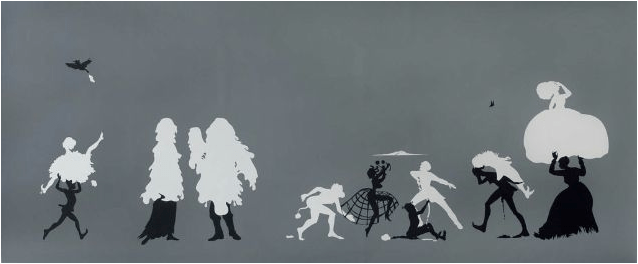
THE RICH SOIL DOWN THERE
Well actually more like this. Huge.
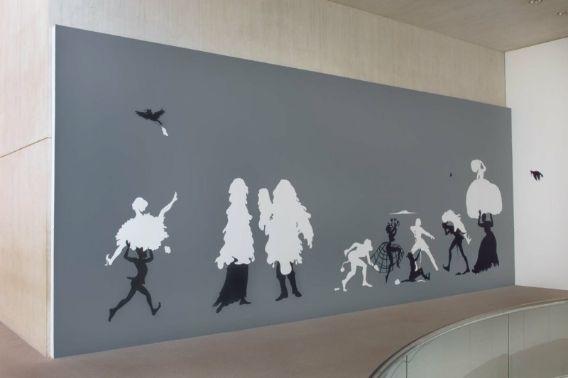
THE RICH SOIL DOWN THERE AT THE MFA. VIA MFA.ORG
I’m not sure I can precisely describe how I felt in those first moments looking at the larger than life paper figures in The Rich Soil Down There. I started with an overwhelming sense of curiosity; what the hell was I even looking at? As my mind began to fill in the blanks of the scene my intrigue changed to fascination and even shame and embarrassment. Those moments where you wonder, “Are people watching me and seeing my interest in this?” Walker’s images are so raw I doubt I’ll even feel grown-up enough to look at them without some embarrassment. In a really good way.
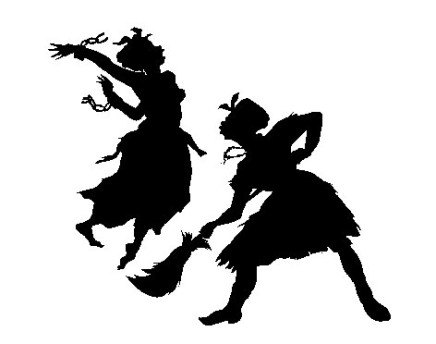
WORK ON PROGRESS, 1998. VIA WHITEHOTMAGAZINE.COM
Walker was born in 1969 in Stockton, California but when her father, also an artist, took a position at Georgia State University, she suddenly found herself in Stone Mountain at age 13. In the birthplace of the KKK revival, Walker found herself suddenly forced to confront her own racial identity in a way quite unlike what she had experienced in California. Walker earned her BFA from the Atlanta College of Art in 1991, but only afterwards was she able to “escape the South” where where Walker says “I still find it impossible to speak.”
Walker went on to earn her MFA from the Rhode Island School of Design in 1994. That same year, in New York City, Walker debuted her signature cutout style in her 50-foot mural Gone: An Historical Romance of a Civil War as It Occurred b’tween the Dusky Thighs of One Young Negress and Her Heart. Three years later, in 1997 her work was included in the Biennial exhibition at the Whitney Museum of American Art, New York. That same year she became one of the youngest recipients of a MacArthur fellowship. She was 27 years old.
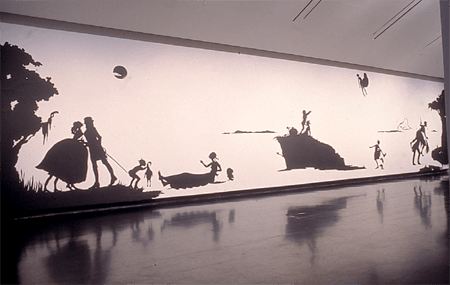
GONE. VIA LEARN.WALKERART.ORG/KARAWALKER
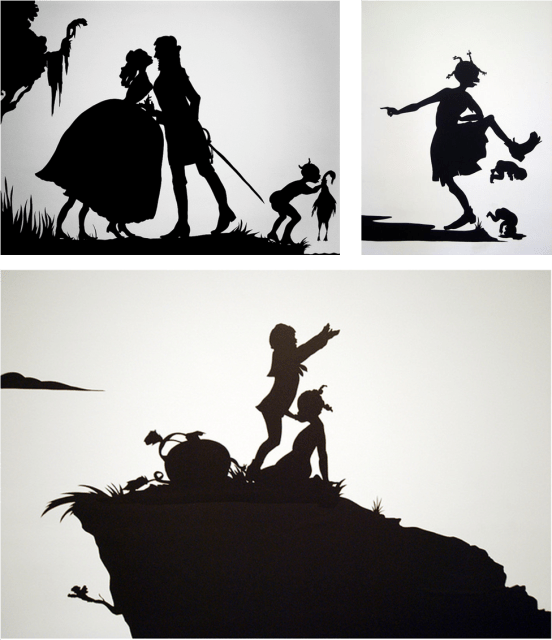
DETAILS OF GONE
Walker’s work largely consists of paper silhouettes pantomiming complex, confusing, provocative and violent scenes of the Antebellum South. Often her silhouettes obscure what might otherwise be too gruesome to bear. Through these scenes Walker explores gender, race, sexuality, history and story telling. “Most pieces have to do with exchanges of power, attempts to steal power away from others,” said Walker. In the world of Walker’s murals, figures are usually cut out of black paper and pasted on to white walls such that everyone is quite literally “black.” Exaggerated facial and body structures combined with specifically chosen costumes defines the race and ethnicity of Walker’s figures and in turn comments on the way race is used to define ourselves and others. We find ourselves ashamed at how naturally it comes to use to use an exaggerated face or the outline of a head kerchief to identify race — we’re participants in what we’re seeing, and we look back at ourselves, and sometimes we don’t like what we see.
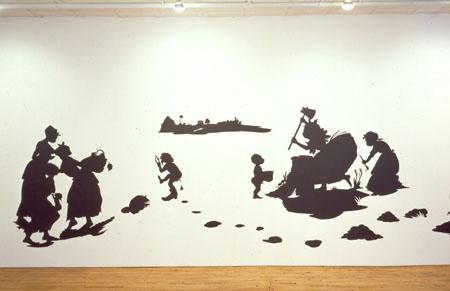
THE END OF UNCLE TOM AND THE GRAND ALLEGORICAL TABLEAU OF EVA IN HEAVEN, 1995. VIA WALKERART.ORG
Walker on silhouettes as a medium:
I was really searching for a format to sort of encapsulate, to simplify complicated things…And some of it spoke to me as: “it’s a medium…historically, it’s a craft…and it’s very middle-class.” It spoke to me in the same way that the minstrel show does…it’s middle class white people rendering themselves black, making themselves somewhat invisible, or taking on an alternate identity because of the anonymity … and because the shadow also speaks about so much of our psyche. You can play out different roles when you’re rendered black, or halfway invisible.
Walker’s characters aren’t the only things that end up distorted. She exaggerates truth and blends fact with fantasy, leaving her viewer actively deciphering history. History, folklore, desire, nostalgia: it’s all in there. There aren’t even timely consequences in Walker’s murals. No one is rewarded or punished. No one within the murals judges or reprimands. The viewer finds themselves thinking, “I can’t believe this all happened” and only remembers as a male figure births a child that the work is indeed Walker’s fiction. Walker constructs and captures timeless moments in history that never were — and in doing so, tells a kind of truth about the things that really did happen. In my mind, it is impossible to accurately explain or depict the complex horrors of the American slave trade and thus Kara Walker doesn’t attempt to. Says Kevin Young, author of Triangular Trade: Coloring, Remarking, and Narrative in the Writings of Kara Walker, “Walker is less an artist of history, whether racial or artistic history, than a historian of fantasy.”
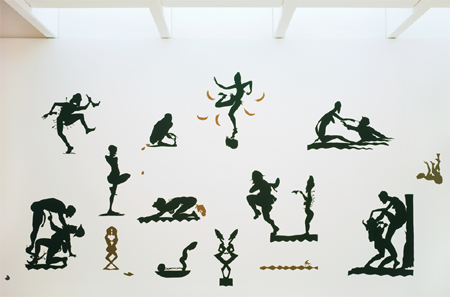
ENDLESS CONUNDRUM, AN AFRICAN ANONYMOUS ADVENTURESS, 2001. VIA WALKERART.ORG
Walked continued (and continues) to advance what her art is and what it can do. In 1997 she debuted Slavery!Slavery! Presenting a GRAND and LIFELIKE Panoramic Journey into Picturesque South Slavery of “Life at ‘Ol’ Virginny’s Hole’ (sketches from Plantation Life)” See the Peculiar Institution as never before! All cut from black paper by the able hand of Kara Elizabeth Walker an Emancipated Negress and leader of her Cause, a room-sized piece laid out about a circular room. The 12×85 foot mural depicts over 20 figures engaged in a nightmarish plantation afternoon that specifically references the nostalgic supposed idyll and casual interracial interactions of afternoons depicted in traditional Antebellum Southern paintings.
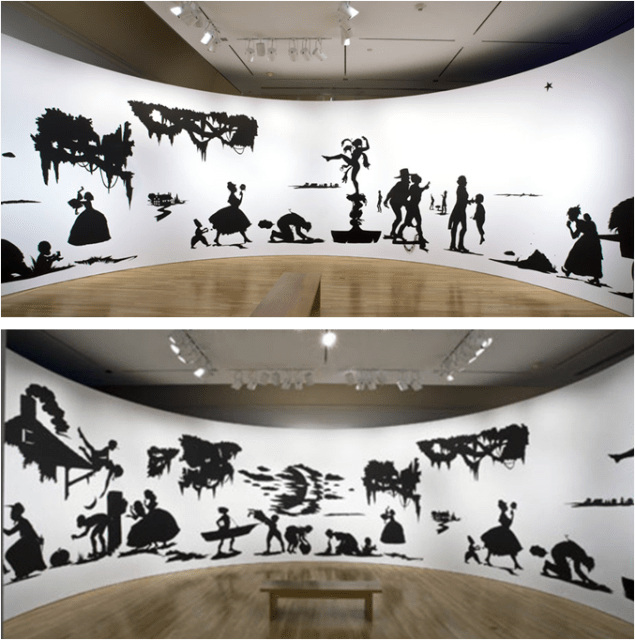
SLAVERY! SLAVERY! 1997
As her career progressed, Walker began to use color and movement to convey emotion and add depth to her works. “I knew for a while that I wanted to make a piece that tried to engage the space a little bit more directly than the pieces that are just cut paper on the wall,” she said. “And my thinking about the overhead projectors connected with my thinking about painting as far as creating an illusion of depth, but in a very mundane, flat, almost didactic way.” She used overhead projectors to cast evocative light on her settings.
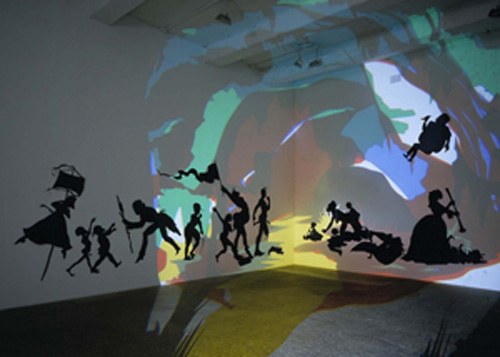
DARKYTOWN REBELLION., 2001. VIA WALKERART.ORG
Though Walker is best known for her cutouts, she also continues to produce drawings, paintings and text based work. Her 1997 work, Do You Like Creme in Your Coffee and Chocolate in Your Milk?, consists of 66 pages of drawings and texts largely on traditional 11-5/8 x 8-3/16 paper. Walker created the piece during her first pregnancy as a diary style response to criticism from other black artists who who felt Walker’s artwork promoted stereotypes and that she was unfit to receive a MacArthur fellowship.
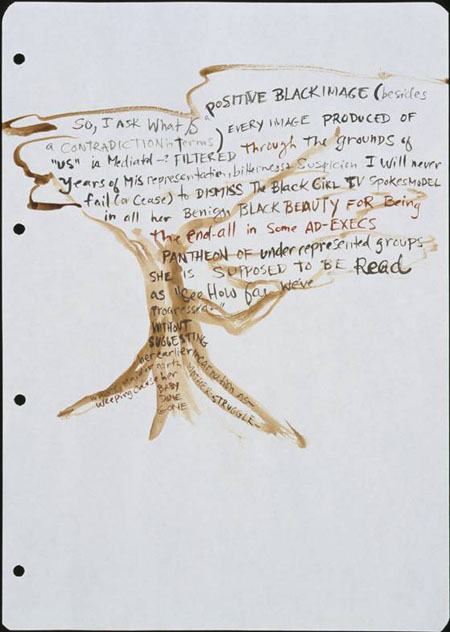
FROM DO YOU LIKE CREME IN YOUR COFFEE AND CHOCOLATE IN YOUR MILK?, 1997. VIA WALKERART.ORG
In 2001, Walker decided to begin exploring video and performance work. She created Testimony: Narrative of a Negress Burdened by Good Intentions in 2004 essentially animating her figures through puppeteering. Even as Walker’s more recent work moves towards drawings and away from silhouettes, Walker continues to produce videos to acclaim. Her most recent, Fall Frum Grace, Miss Pipi’s Blue Tale, tells the tale of a woman who seduces her husband’s slave and explores the mythology of female sexuality in the Antebellum South.
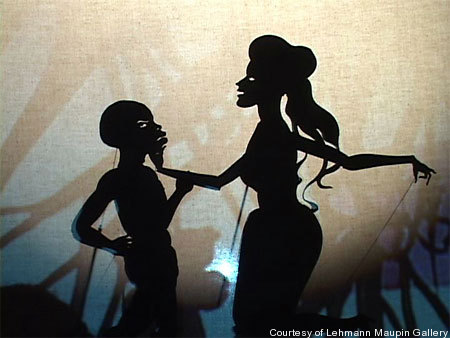
FALL FROM GRACE, MISS PIPI'S BLUE TALE, 2011
It’s been a very slow leap… from the wall to the moving image. I went through the projection pieces first and then I hemmed and hawed on making a film for a long time… I kept running across silhouette films from the early 20th Century and I thought that was just the logical next step. Just esthetically. But… I think because this work is very theatrical and because… the structure sort of referenced… you know, fall into these two camps, visual and literary. It almost screams for some kind of… merger of those worlds. Something theatrical in a real sense. I think, for a while, I resisted film because I kind of liked the stubbornness or obstinate quality of just looking at stationary images that kind of force you to make the connections.
Kara Walker’s artwork speaks to the part inside all of us that wants to wash over the past. That wants to pretend stereotypes don’t exist anymore and we’ve reached that great big beautiful “post-racial” tomorrow. It speaks to that place where things are uncomfortable and you’d rather not talk about them. You where you want to look away but you just can’t. What I didn’t know in my first moments gawking at The Rich Soil Down There was that my emotions were playing directly from Walker’s hand. That, without my realizing it, her artwork was having its precise intended effect.
My works are erotically explicit, shameless. I would be happy if visitors would stand in front of my work and feel a bit ashamed—ashamed because they have simply believed in the project of modernism.
Hear and see Walker speak for herself about her artwork:
Art House Attack! – 12 Great Movies About Art
0. 1/28/2012 – Art Attack Call for Submissions, by Riese
1. 2/1/2012 – Art Attack Gallery: 100 Queer Woman Artists In Your Face, by The Team
2. 2/3/2012 – Judy Chicago, by Lindsay
3. 2/7/2012 – Gran Fury, by Rachel
4. 2/7/2012 – Diane Arbus, by MJ
5. 2/8/2012 – Laurel Nakadate, by Lemon
6. 2/9/2012 – 10 Websites For Looking At Pictures All Day, by Riese
7. 2/10/2012 – LTTR, by Jessica G.
8. 2/13/2012 – Hide/Seek, by Danielle
9. 2/15/2012 – Spotlight: Simone Meltesen, by Laneia
10. 2/15/2012 – Ivana, by Crystal
11. 2/15/2012 – Gluck, by Jennifer Thompson
12. 2/16/2012 – Jean-Michel Basquiat, by Gabrielle
13. 2/20/2012 – Yoko Ono, by Carmen
14. 2/20/2012 – Zanele Muholi, by Jamie
15. 2/20/2012 – The Malaya Project, by Whitney
16. 2/21/2012 – Feminist Fan Tees, by Ani Iti
17. 2/22/2012 – 12 Great Movies About Art, by Riese
![]()
Film itself is an art, and then sometimes people make films ABOUT art, which makes it a piece of art about art, which is meta, and often very entertaining!
Here’s 12 that I like, in no particular order. What are your favorites?
+
Twelve Movies About Art
+
+
Frida (2002)
starring: Salma Hayek, Alfred Molina, Antonio Banderas, Ed Norton, Saffron Burrows, Valeria Golino
Frida Kahlo has a lot going on, and some of that involves Diego Rivera and a lot of it involves her art and also some of it involves other women.
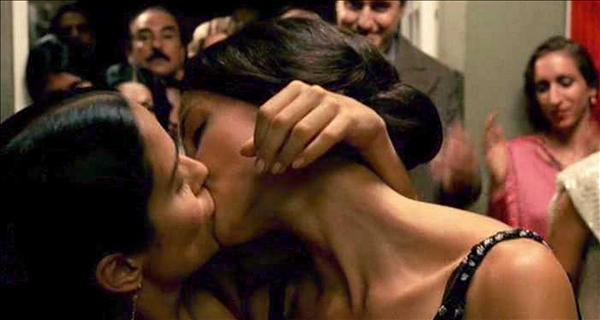
![]()
I Shot Andy Warhol (1996)
Starring: Lili Taylor, Jared Harris, Martha Plimpton, Stephen Dorff
[get]
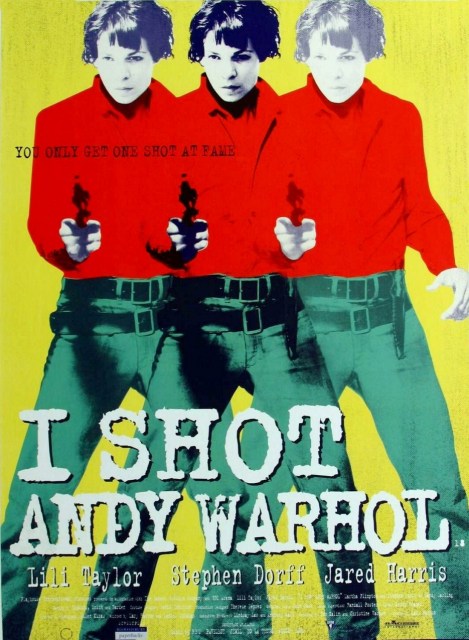
This is a bit of a double-whammy — you get the story of Andy Warhol and The Factory and you ALSO get the story of radical lesbian feminist anarchist Valerie Solanis, author of The SCUM Manifesto (SCUM = Society For Cutting Up Men). It’s widely accepted that Solanis suffered from untreated mental health issues, but nobody knew enough about that then to do anything about it, and if they had, one can imagine that it wouldn’t have been very humane.
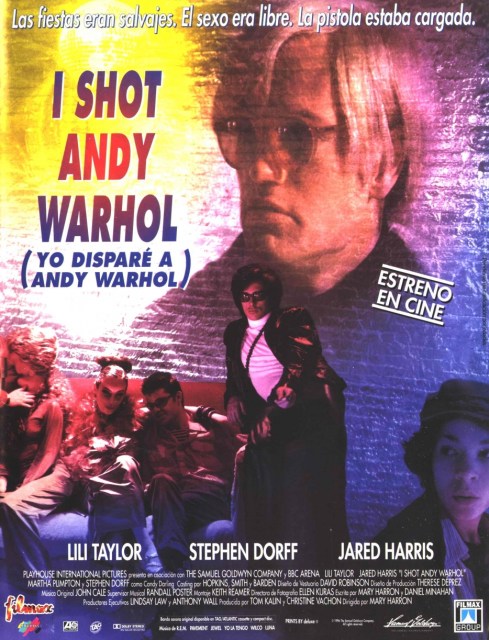
Regardless — Lili Taylor was like Queen Weirdo in 90’s indie films, she was my favorite along with Parker Posey. In some ways this movie is like my worst nightmare; the idea that someone who feels unfairly rejected by your artists’ collective decides to get revenge on you via attempted murder. Anyhow — this indie gem is criminally overlooked.
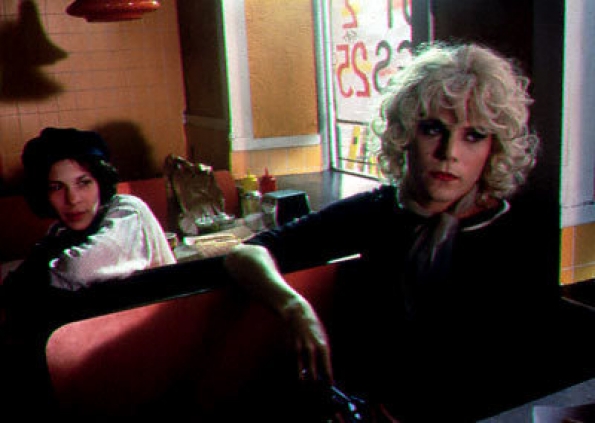
![]()
Art School Confidential (2006)
[watch]
starring: Max Minghella, Sophia Myles, John Malkovich
The primary point of this film is that Kate Moennig is in it and she plays a lesbian with hair worse than Shane’s ever was.
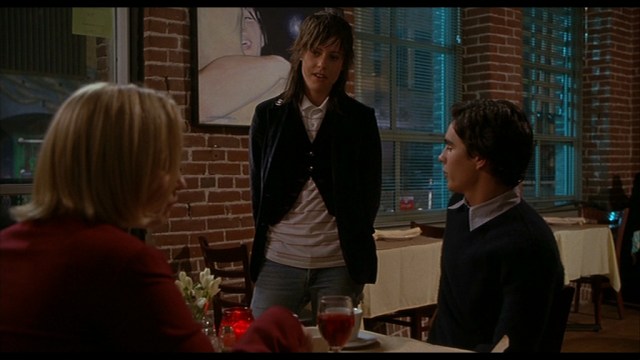
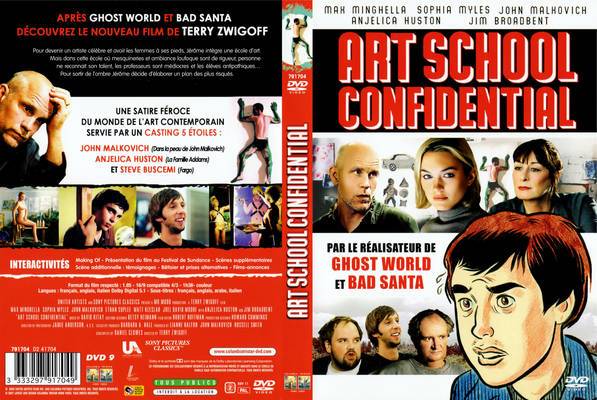
![]()
Exit Through the Giftshop (2010)
[get]
This is one of our Design Director Alex Vega‘s favorite movies of all time. This is what she has to say about it: “Exit Through the Gift Shop is Banksy‘s shot at a documentary, and it’s a total success obviously. Don’t know who Banksy is? You should because he’s only the most notorious (and brilliant) street artist ever but if you don’t it’s cool — this is still a great film that captures a piece of the underground street art movement, as well as the story of Thierry (pronounced “Terry”) Guetta, the documentary’s filmmaker.
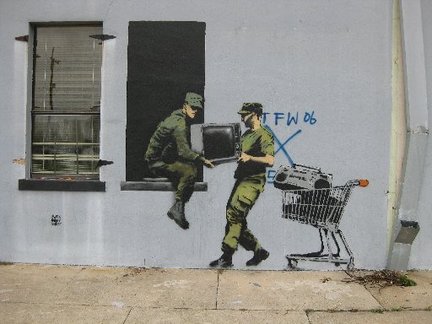
Thierry is batshit crazy but also endearing. And the story that develops as he films all these street artists (and eventually his encounter with Banksy) becomes something unexpected — and I love a documentary that totally grows and becomes something it never intended to be. It really makes this a special gem of a film… and a super funny and entertaining one too.”
![]()
Six Degrees of Separation (1993)
Starring: Will Smith, Donald Sutherland, Stockard Channing, Ian McKellen, Mary Beth Hurt, Anthony Michael Hall, Heather Graham, Anthony Rapp
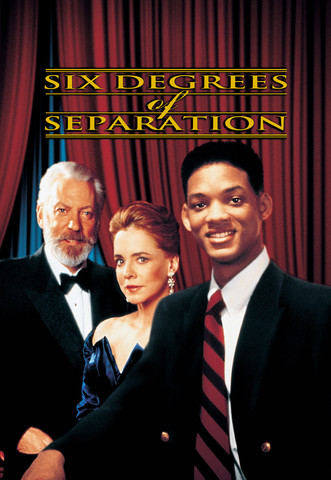
This is actually one of my favorite movies of all time and it’s based on one of my favorite plays of all time. Based on the play by John Guare, the film introduced me to Kandinsky — a double-sided Kandinsky painting is the film’s central motif — who I consequently became obsessed with.
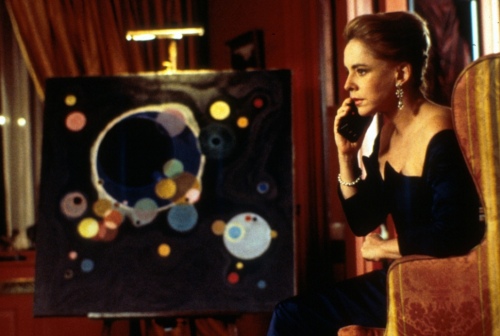
I had a few Kandinsky posters up in my room throughout college, along with Rothko who I also love.
![]()
My Kid Could Paint That (2007)
[watch on amazon]
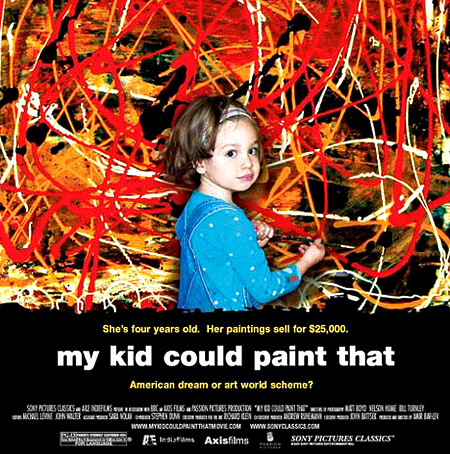
The filmmaker who made this film was interested in Marla’s story because it was its own commentary on the popular perception of modern art as a “racket.”
See, four-year-old Marla really liked to paint pictures and her Dad had some paints and canvas around. Then somebody noticed and displayed her paintings at his cafe and then people wanted to buy them and then there was a newspaper article about it and a gallery opening and people started buying the paintings for a lot of money and it became a thing. Television and all that.
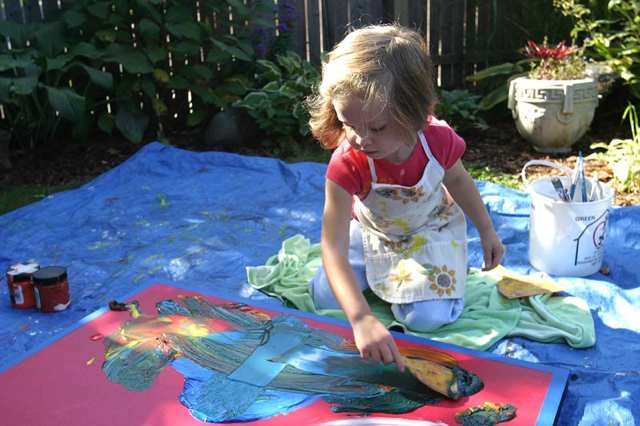
When the media coverage gets oddly out of control and 60 Minutes accuses the father of doctoring the work, claiming that it’s not really Marla, the filmmaker becomes a character in his own documentary as he questions his belief in the family and the purpose of his documentary.
![]()
Basquiat (1996)
Starring: Jeffery Wright, Benicio Del Toro, Claire Forlani, David Bowie, Dennis Hopper, Gary Oldman, Christopher Walken, William Dafoe, Parker Posey, Courtney Love, Tatum O’Neal
[buy? (but I think it’s on Netflix)]
When I saw this film, the story of graffiti artist and Neo-expressionist painter Basquiat, at the State Theater in Ann Arbor, all my teenage punk friends felt lukewarm towards it and I thought it was just the greatest thing. I went back and saw it again by myself, and then rented it. It’s a brilliant story, and also: David Bowie as Andy Warhol!
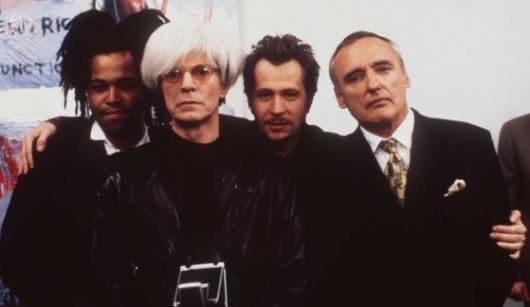
Basquiat died at the unbearably tender age of 27 from a heroin overdose, about a year and a half after Andy Warhol’s death, which affected him greatly.
![]()
High Art (1998)
Starring: Radha Mitchell, Gabriel Mann, Charis Michelsen, Ally Sheedy, Patricia Clarkson
[watch]
+
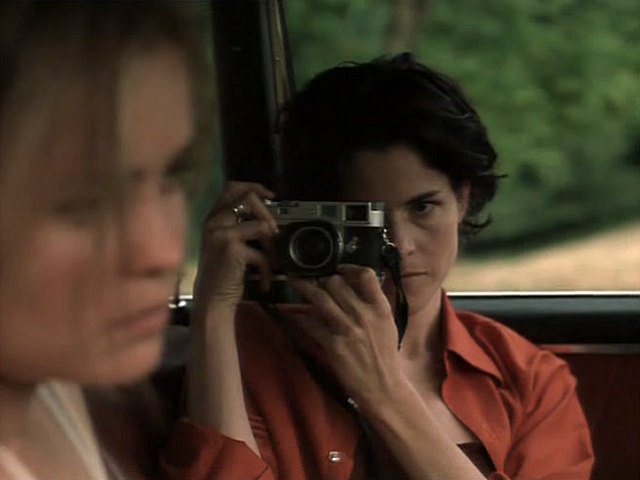
Most lesbians have really strong feelings about this film, which as you can imagine, involves Ally Sheedy as a drug-addicted wildly talented super intense photographer Lucy Berliner and Rahda Mitchell as the artsy girl upstairs Lucy Berliner woos away from her boyfriend. You know that story.
![]()
Pollock (2000)
Starring: Marcia Gay Harden, Ed Harris, Jennifer Connelly, Val Kilmer
This was one of the best films of 2000 and it was on everybody’s Top Ten list. I’m gonna be honest with you that I didn’t actually see this movie, but I wanted to, and I think I will. Did you? I’m asking for a friend. The same friend who saw it and said she liked it, therefore empowering me to include it here.
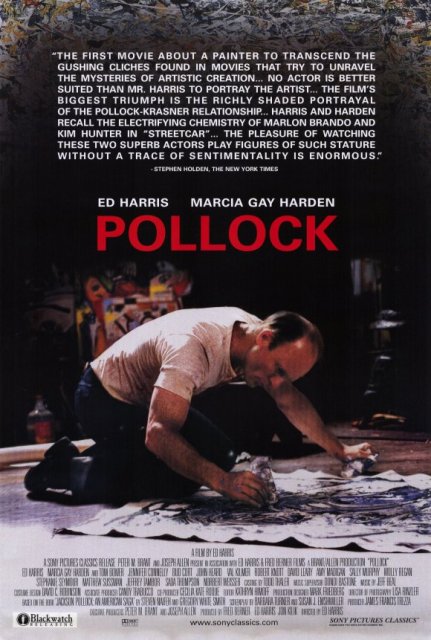
![]()
Pecker (1998)
Starring: Edward Furlong, Christina Ricci, Bess Armstrong, Mary Kay Place, Martha Plimpton, Brendan Sexton III, Lili Taylor, Patricia Hearst
This underrated masterpiece by John Waters stars Edward Furlong — slightly past his peak, but still full-on Furlong — as Pecker, a sandwich shop worker whose photographs of his insane family launch him into art world fame. The film takes place in Baltimore and features a typically Waters’ cast of outrageous characters, including Pecker’s “fag hag” go-go-dancer older sister played by Martha Plimpton and his grandmother Memama, who talks to a Virgin Mary doll.
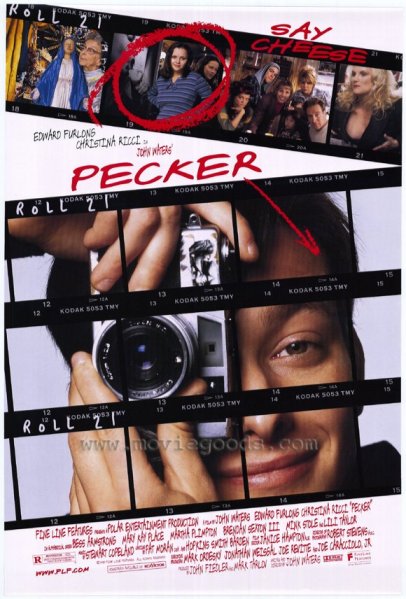
I was really into Christina Ricci in the 90’s. She was so bad-ass but also vulnerable, with her moon-shaped face and dark dark hair and giant rack. Either she was sexy in your face, or she was being pouty/petulant, and she was good at both.
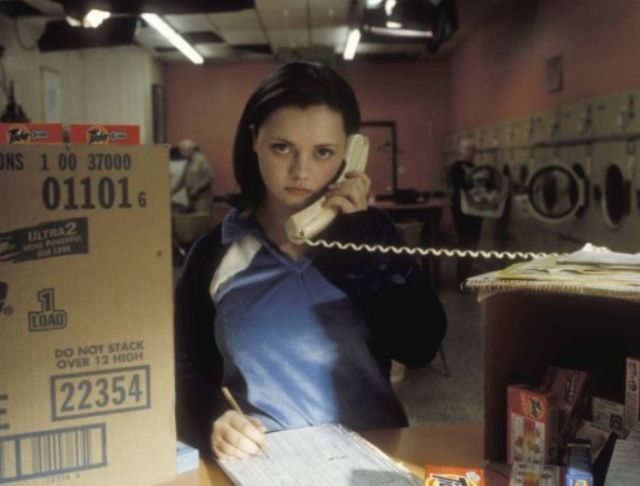
![]()
Don’t Eat the Pictures (1983)
Starring: Cookie Monster, Big Bird, Telly, Oscar the Grouch, The Count, Grover
By far the best movie about art ever invented is Don’t Eat the Pictures, a classic named after the film’s titular musical number in which Cookie Monster wants to eat the pictures.
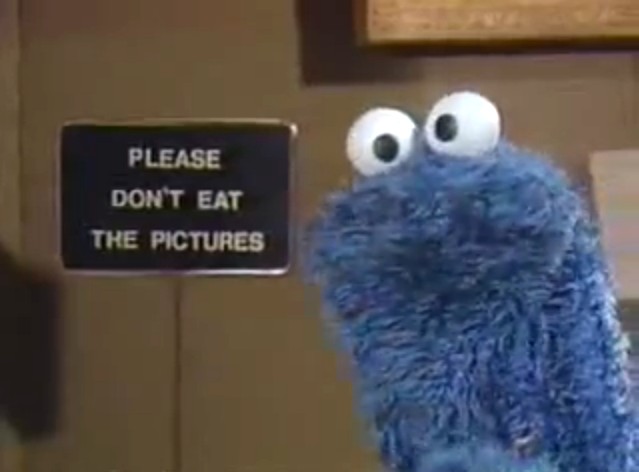
When the gang visits the Metropolitan Museum of Art, Big Bird gets lost looking for Snuffy (at this point in Sesame Street history, Snuffy remained Bird’s imaginary friend who nobody besides Bird could actually see), and the entire cast has to hide out in the museum overnight, hunting for Bird while avoiding detection by the museum security guard.
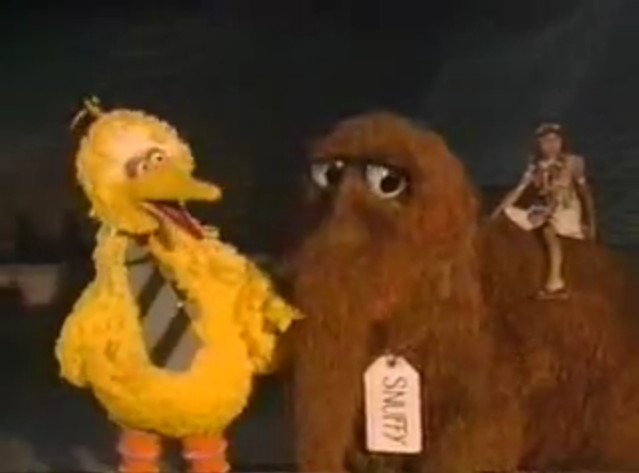
Art Attack! Feminist Fan Tees: Action Heroine Edition
0. 1/28/2012 – Art Attack Call for Submissions, by Riese
1. 2/1/2012 – Art Attack Gallery: 100 Queer Woman Artists In Your Face, by The Team
2. 2/3/2012 – Judy Chicago, by Lindsay
3. 2/7/2012 – Gran Fury, by Rachel
4. 2/7/2012 – Diane Arbus, by MJ
5. 2/8/2012 – Laurel Nakadate, by Lemon
6. 2/9/2012 – 10 Websites For Looking At Pictures All Day, by Riese
7. 2/10/2012 – LTTR, by Jessica G.
8. 2/13/2012 – Hide/Seek, by Danielle
9. 2/15/2012 – Spotlight: Simone Meltesen, by Laneia
10. 2/15/2012 – Ivana, by Crystal
11. 2/15/2012 – Gluck, by Jennifer Thompson
12. 2/16/2012 – Jean-Michel Basquiat, by Gabrielle
13. 2/20/2012 – Yoko Ono, by Carmen
14. 2/20/2012 – Zanele Muholi, by Jamie
15. 2/20/2012 – The Malaya Project, by Whitney
16. 2/21/2012 – Feminist Fan Tees, by Ani Iti
![]()
Alissa and I met at art school, where we spent four years hanging out in the same studio space and learning to do art-talk. Art school is pretty heavily focused on the individual, obviously for good reason, but the experience can leave you feeling isolated. The medicine for this is collaboration!
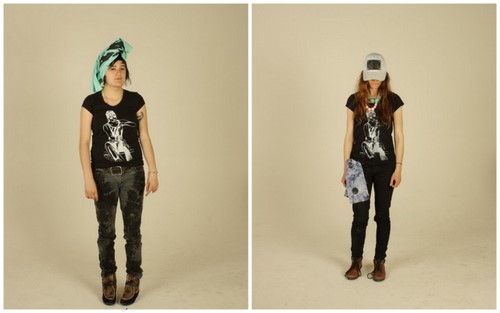
ani and alissa
We became the “Creamed Corn Collective,” named after the rejected — the very last can that lingers in the cupboard for years. Also we both found this scene from Twin Peaks hilarious.
Our first project, the Feminist Fan Tee, was born from a shared desire to wear a t-shirt emblazoned with our mutual feminist icon, Helen Clark — former Prime Minister of New Zealand and now Administrator of the United Nations Development Programme, and lovingly referred to by supporters as Aunty Helen. However, we couldn’t settle for just one feminist icon! We wrote lists and lists of women whose fan clubs we would definitely join: Kate Shepherd, Kim Hill, Missy Eliott, Ripley, Carrie Fisher. To narrow down our final selection, we decided to embrace a few of the running themes we’d noticed, mainly that we were especially fond of aggressors and referential pop culture. Also we were selling the shirts, meaning our choices couldn’t be so obscure as to be unrecognisable to the casual passer by.
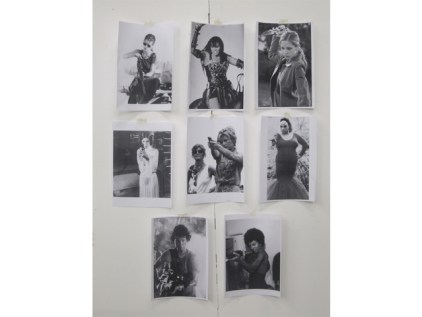
planning
So it came to be, we produced the Feminist Fan Tees: Action Heroine Edition.
We chose to do a series of eight designs — a number that felt both ambitious and plausible, seeing as we were screen printing everything by hand. Our final selection ended up being Sarah Connor, Princess Leia, Foxy Brown, Buffy, Divine, Ripley, Thelma & Louise, and my personal fave, Xena. You guys, Xena is not only a feminist icon but also totally a lesbian, so I feel like you get more bang for your buck there. I really wanted to do a Scully t-shirt, but we struggled to find a picture of her armed and looking aggressive, rather than scared. It was important to us that the images we used looked powerful and empowered. I mean, who would fuck with an armed Foxy Brown, ya know?
While there were heaps of characters regretfully omitted (Scully and my girl Captain Janeway of Star Trek Voyager), the end result is a collection of some pretty sweet tees (organic & fair trade because we’re good like that) featuring some damn badass ladies, all in scenes of confrontation, wielding weapons.
We still really want to do that Helen Clark t-shirt — I’m thinking Feminist Fan Tees: Political Warrior Edition?
If you’re interested in getting some action hero action on your body, you can e-mail anamerleiti [at] gmail [dot] com. The t-shirts are NZ$50.00, prints are also available for purchase. View more of Ana Iti’s work and Alissa Gilbert’s work, and be a fan on Facebook.
Art Attack!: The Malaya Project and Liberating Images of Queer Filipino America
0. 1/28/2012 – Art Attack Call for Submissions, by Riese
1. 2/1/2012 – Art Attack Gallery: 100 Queer Woman Artists In Your Face, by The Team
2. 2/3/2012 – Judy Chicago, by Lindsay
3. 2/7/2012 – Gran Fury, by Rachel
4. 2/7/2012 – Diane Arbus, by MJ
5. 2/8/2012 – Laurel Nakadate, by Lemon
6. 2/9/2012 – 10 Websites For Looking At Pictures All Day, by Riese
7. 2/10/2012 – LTTR, by Jessica G.
8. 2/13/2012 – Hide/Seek, by Danielle
9. 2/15/2012 – Spotlight: Simone Meltesen, by Laneia
10. 2/15/2012 – Ivana, by Crystal
11. 2/15/2012 – Gluck, by Jennifer Thompson
12. 2/16/2012 – Jean-Michel Basquiat, by Gabrielle
13. 2/20/2012 – Yoko Ono, by Carmen
14. 2/20/2012 – Zanele Muholi, by Jamie
15. 2/20/2012 – The Malaya Project, by Whitney
![]()
I have difficult parents — they’re immigrants and I’m first-generation, American-born. They are also traditional and very homophobic, and that has not made my life easy. I knew in my single digits that I was gay, but I had nowhere to go with that knowledge, and no one to talk to about it. I looked online for people to connect to, but this was pre-YouTube, so it took half a day on our dial-up connection to download 30-second clips from The L Word or Boys Don’t Cry. I looked for queer people on Xanga to talk to, but that community wasn’t the kind I needed. What I really needed was someone to talk to, and someone to look up to, who understood what I was going through — race-related issues and all.
Gregory Pacificar and Deney Tuazon also had this problem. It’s strangely comforting knowing that we experienced the same isolation as queer people of color, and that we all looked for the same difficult-to-find queer community. Pacificar and Tuazon similarly went to the Internet to look for queer Filipinos to talk to, and they weren’t able to find that community, either. As Pacificar says, “There was a lack of our visibility but there wasn’t a lack of porn sites.”
Pacificar and Tuazon started talking to people involved with Barangay LA, a not-for-profit organization that supports the LGBTQ Filipino/a-American community in Los Angeles, asking other queer Filipinos/as what their coming-out stories were. “A lot of them talked about their family, being afraid to tell others, and soon a story started to develop,” Pacificar says. “We started to see commonalities in their stories, and in our own as well.”
Pacificar explained that the people they talked to also described a desire to find others who “were just like them” when they were first coming to terms with their sexualities. Other queer Filipinos/as found chat rooms to connect with people (“AOL was big when we were coming out,” Tuazon adds), but the lack of visibility still remained. “They [still] couldn’t find positive images of other LGBTQA Filipinos/as,” Pacificar says.
Out of this absence came The Malaya Project.
According to Pacificar, The Malaya Project, in collaboration with Barangay LA, collects “written and photographic narratives of the lives of proud LGBTQA Filipinos and Filipinas.” The word “Malaya” means “to be free,” and these images are truly liberating — how often do you see queer people of color feeling proud of themselves, doing well for themselves, and fighting for themselves?
When I firstsaw the images, I was struck at how infrequently I’ve seen images like that of queer Filipina artist Allison Santos (of That’s What She Said) smiling and laughing with her family inside of a modest backyard LA garden. Or musician and singer Jonathan Atanaya Ilano standing in his home space, holding a vinyl copy of Ike and Tina Turner’s What You Hear Is What You Get. Or Patrick Santa Ana, a designer, standing proudly in the rooms of the accessory store he opened in Long Beach, CA, ELEV8. Or Maria Carmen Hinayon, a pageant-winner and student who identifies as “transgender and empowered,” walking proudly through her school’s campus.
“For me, [The Malaya Project] was a chance to give someone an opportunity to look up to someone when they’re a teen. A chance I didn’t have,” Pacificar says. “I was one of those gay boys looking for a role model, looking for guidance.”
The images are both powerful and empowering. Not only do they present the individuals in their personal space, but the photos capture the details of their subjects’ lives, from the contents of Hinayon’s purse (lip gloss, perfume, brushes, sunglasses and a makeup compact) to the array of shoes (slip-ons and lace-ups covered in everything from plaid to black leather) lined up in a wall in Ilano’s home. It’s these details that create a complete and complex picture of identity. Pacificar, a filmmaker, and Tuazon, a photographer, clearly treat their subjects with care and compassion.
“Their story is what starts the creative process,” Tuazon says. “We always ask our subjects what it is that they want to share to others.”
Each of the profiles highlights something particular to each of the individuals — in Ilano’s case, this particular spark “was music and it was natural to highlight that side of him,” Tuazon adds. Ilano’s profile is one of the two that includes video, in which he belts out a song he wrote himself “when he was trying to figure out who he was as a gay teen,” says Pacificar. “When he showed us his lyrics we just had to capture him singing the very song he wrote to get through his teen years.”
The lyrics are heartfelt and emotional: “Year after year / growing into this fear / Kept me hoping / I’d make it to the other side / Year after year / drowned myself in my tears / but now I’m here / on the other side.” It’s the kind of thing a queer kid needs to hear, whether she’s a person of color or not.
[yframe url=’https://www.youtube.com/watch?v=2IzhCG2JAvY’]
Hinayon’s message is similar. In one image, Hinayon walks stoically through campus, and in her handwriting she writes about being “bullied, harassed and discriminated [against] but I never gave up.” In another image, she stands in the middle of a crowded hall. Next to this image, she has written “Education is the key to liberation.”
“It was painful to hear when Carmen shared her experience being bullied, but I was deeply touched when she said ‘I want other transgenders to know they can make it. They can get an education. They can achieve all their goals.'” Pacificar says.
Santos’s profile sends a message about family that is bittersweet to look at, at least for me: Her images are firmly grounded in home and family, and the acceptance she feels from her parents is in every photograph. “When we met her, she also started telling us about her family. And how they were so supportive of her identity as a queer Filipina,” Pacificar says.
The images convey this so well: Many of the photos of Santos include her parents and her sister, from the jumping shot of her family suspended in mid-air, smiling, to a photo of her sitting next to her mother. Next to the photo is written, in Santos’s handwriting: “I wanted to wear shorts and pants, mom wanted dresses. We fought for years. One day I came home and my mom said she bought me two pairs of boxers. Our war ended.”
The love and support in the family was palpable when Pacificar and Tuazon entered Santos’s house for the photo and video shoot. “The first step we took inside their home, you can read that support from wall to wall. Diplomas, awards and medals next to their family photos,” Tuazon says.
These images are powerful and necessary — images of family, survival and support from the queer Filipino/a community are important but often difficult to find. But it’s the story that Santos, Ilano, Hinayon and Ana wish to share that drives the project and its message. “All our participants have … faced struggles [that aren’t] uncommon in our community. But what makes them all great role models is their journey to overcome obstacles,” Pacificar says.
These are the images I needed growing up, and the images that Pacificar and Tuazon needed, too. The Malaya Project takes our search for community, especially as LGBTQA people of color, and presents it to us: The role models we have and maybe wish we had.
Artist Attack! Yoko Ono is My Hero and I’m Not Sorry
0. 1/28/2012 – Art Attack Call for Submissions, by Riese
1. 2/1/2012 – Art Attack Gallery: 100 Queer Woman Artists In Your Face, by The Team
2. 2/3/2012 – Judy Chicago, by Lindsay
3. 2/7/2012 – Gran Fury, by Rachel
4. 2/7/2012 – Diane Arbus, by MJ
5. 2/8/2012 – Laurel Nakadate, by Lemon
6. 2/9/2012 – 10 Websites For Looking At Pictures All Day, by Riese
7. 2/10/2012 – LTTR, by Jessica G.
8. 2/13/2012 – Hide/Seek, by Danielle
9. 2/15/2012 – Spotlight: Simone Meltesen, by Laneia
10. 2/15/2012 – Ivana, by Crystal
11. 2/15/2012 – Gluck, by Jennifer Thompson
12. 2/16/2012 – Jean-Michel Basquiat, by Gabrielle
13. 2/20/2012 – Yoko Ono, by Carmen
![]()
I love Yoko Ono (and I don’t think she broke up the Beatles).

“True artists are prophets. I don’t want to be that prophetic in that sense because it’s so lonely.”
It is hard to write about Yoko Ono as an artist for a few reasons, including but not limited to my inability to separate Yoko Ono’s tweets from spoken word poetry. It is also hard because of the sheer length and depth of her artistic career: Yoko was creating art – and feminist art at that – before she even met that dude John Lennon. Afterward the work she had been doing, and continued to do, kind of got eclipsed by his. And it’s a shame, because her work was and remains prophetic, profound, and honest. John Lennon once said everyone knew who Yoko Ono was but nobody knew what she did. But what she does is create art – performance art, conceptual art, fine art, visual art, the written word, music – that moves people deeply and talks about what’s going on on the inside. Yoko Ono’s art is about communicating the inward outward, challenging people to think about the world around them, and, of course, peace. I tend to see her pieces as being about peace — world peace, inner peace, peace and quiet.
Plus, she’s completely and totally provocative. What’s not to love?

“Everybody’s an artist. Everybody’s God. It’s just that they’re inhibited.”
Yoko Ono has produced far too many works of art for me to choose a “favorite.” She’s also done far too much for me to provide you with a truly rich history of it all that doesn’t come bound in hardcover. So I’m just gonna pick a handful of the things I’ve loved when I’ve looked into Yoko Ono’s work, and the stuff I’ve appreciated.
In 1964, Yoko performed a happening called “Cut Piece,” in which she wore a draped shirt, knelt down, and instructed people to cut. Just “cut.” She wanted her shirt to be cut until she was naked. It was about suffering, about the pain inside, about loneliness and nakedness and how other people take things away from you and put you back together, and about getting rid of all of it from the outside.
YOKO ONO CUT PIECE by TECHNOLOGOS
Yoko also released a film piece in 1965 called simply “Fly.” I have a lot of feelings about this, mostly because she identified strongly, at the time, with the fly as an alter ego:
In the ’60s Ono took the common housefly as an alter ego. Clearly, the artist, mocked and maligned long before she began attracting the misguided ire of rock fans, regards the fly as an embodiment of her public persona–its apparent insignificance counterbalanced by its outsize ability to annoy. But even more important to Ono’s associative thinking is the fly’s constant, nervous “performing” and its elusively melodious buzz.
This kind of makes me think maybe we all have something in common with the fly. It’s how it keeps flying around looking for something and making this noise. “I am here. I am here.” And even if you don’t want it there, it keeps buzzing. You can’t turn off a fly. You can rarely even get rid of one. So maybe Yoko Ono has even more in common with the housefly than she originally thought. She just keeps keeping on. It’s really inspirational.
The movie follows a fly as it moves up a woman’s body. The noise is weird and, in the case of this specific video, the film quality is a little low. But you can get the drift.
I want to close, though, with the 1961 “Painting to Hammer a Nail.” This is not to be confused with “Painting to Sleep On.”
“Painting to Hammer a Nail” was pure in purpose: a white painted panel of wood had a hammer attached to it by a chain, and a box of nails sat next to it. Everything was there for the purpose of suggesting to viewers and passerbys that they should hammer a nail in themselves.
The piece, however, hasn’t stopped since 1961. Yoko Ono met John Lennon when she was showcasing this piece in 1966. True story. And in 2009, it was displayed at the Seattle Art Museum, and participants had a variety of approaches. Here’s one:

Clean and simple. Nails. Wood. Pure in purpose.
But then there is this one:

And her reaction to that? “I had a great laugh with my friends.” She isn’t even batting an eyelash. It’s like she kind of predicted this would happen, or maybe had no predictions for the piece. It’s like maybe Yoko Ono doesn’t think the same piece of art should ever have to look the same from day to day to be just as complete.
And it’s in this moment where one has to look around and think, “Yoko Ono has given everyone this huge gift.” And the gift is not “Painting to Hammer a Nail,” or any other specific piece. The gift is about being able to express something else. Yoko Ono communicated to us her pain, her suffering, her happiness, and her life. She shared a lot with us, and she still does. She stood up for us. She stood up for others. And in the end, she made us all a little bit more free. And maybe a little more peaceful.

pins from YES YOKO ONO, a retrospective gallery
Artist Attack! Boom For Real, Jean-Michel Basquiat Was Here
 Art Attack Month:
Art Attack Month:
0. 1/28/2012 – Art Attack Call for Submissions, by Riese
1. 2/1/2012 – Art Attack Gallery: 100 Queer Woman Artists In Your Face, by The Team
2. 2/3/2012 – Judy Chicago, by Lindsay
3. 2/7/2012 – Gran Fury, by Rachel
4. 2/7/2012 – Diane Arbus, by MJ
5. 2/8/2012 – Laurel Nakadate, by Lemon
6. 2/9/2012 – 10 Websites For Looking At Pictures All Day, by Riese
7. 2/10/2012 – LTTR, by Jessica G.
8. 2/13/2012 – Hide/Seek, by Danielle
9. 2/15/2012 – Spotlight: Simone Meltesen, by Laneia
10. 2/15/2012 – Ivana, by Crystal
11. 2/15/2012 – Gluck, by Jennifer Thompson
12. 2/16/2012 – Jean-Michel Basquiat, by Gabrielle
![]()
Puerto Rican. Haitian. Brooklyn. Graffiti tags on SOHO buildings turned high concept neo-expressionist art gathered for retrospectives in the Whitney Museum of American Art.
This is the legacy of Jean-Michel Basquiat. But I look at him like he could have been my grandfather, who was also a man of color imbued with multiple talents. My grandfather was a skilled carpenter, pastry chef, opera singer, Nintendo player and also a poet. He did all of the things you do when the you exist amidst the spirits of enslaved islanders crash landing into a culture that still wishes to devour every ounce of other left on your skin. Basquiat lived that existence in his own Brooklyn born, Renaissance man, tortured artist kind of way.
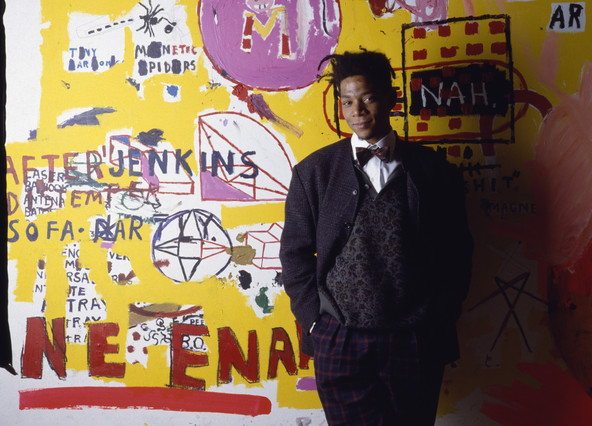
jean-michel basquiat
Starting with striking poetic one-liners bombed all over NYC under the tag SAMO — as in “same old shit” — Basquiat left an early mark on the bloated belly of 1980s New York. A runaway, Basquiat bummed around in epic fashion, living in boxes and on the dance floors of crowded clubs, before Giuliani sterilized New York City, when it was still just as raw and vibrant as the people in it.
Basquiat did not just bomb tags. He played cacophonous music in a band called Grey, named after the book Grey’s Anatomy. His mother had gifted him the famous book after he’d been hit by a car as a child. It’s like tragedy was written into his destiny. Shit, Lil Wayne got shot in the face as a kid and that’s why nothing gets Weezy down. As a prologue to that type of cliché rap bravado, Basquiat took his licks, his anatomy book and eschewed his “fuck you” art in every way possible. He technically couldn’t play any instruments, but his dedication to art and his vision got him onstage and made Grey a hot act in the city. He was a movement. Basquiat made friends with Fab 5 Freddy and Debbie Harry before he ever sold a painting, before I was born, and before the internet came and made everyone famous for nothing. He catapulted himself into megastardom with an insane work ethic, painting around the clock while still maintaining a presence in the party scene. A high profile friendship with Andy Warhol added to Basquiat’s mystique and propelled him into the upper echelons of the white elite art world. Not that they understood him anyway, not like that kept them from describing his work as “primitive” and him as a “child” and the Whitney wouldn’t even display his art until AFTER he died. Still Basquiat was a living art legend, a one-time boyfriend of Madonna and just a dude trying to find his place in the world.
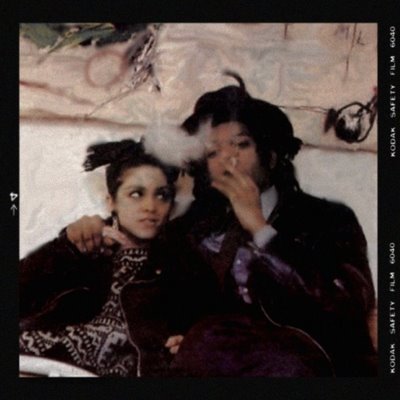
Madonna and Basquiat
I won’t go into a complete retelling of his life — that’s what Wikipedia is for, right? No seriously, I won’t out of respect because others have done it better. Tamra Davis’ documentary Jean-Michel Basquiat: The Genius Child and Basquiat, a film by fellow artist, Julian Scnabel, both do a breathtaking job of chronicling his meteoric but brief life.
It’s ART ATTACK so I have to discuss his art but I’m nervous. I’m just some chick from the Bronx writing poems on trains, biting my nails and trying to keep my deadline extension. I’m not an art major and don’t know the right words. I do know what moves me and Basquiat does.
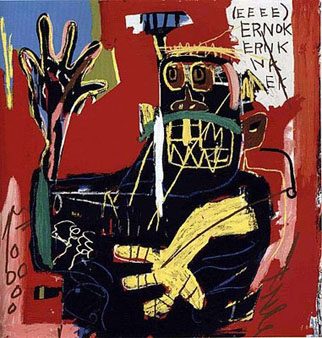
"ernok"
Real talk: I don’t even know what “Ernock” is. I just know that it makes me feel uncertain, moved, frightened, and I kept it as my desktop background for almost a year. (The honor of modern day reverence…)
Basquiat pulled in references from every discipline, every remarkable moment/person in history (ranging from Charlie Parker to Batman and Robin) and his entire life as an artist and man of color. He dissected blackness, Afro-Latino heritage and racism by pulling them into the forefront of consciousness through graphic purposeful art. Basquiat refused to describe his pieces because it was like asking “Miles [Davis], how does your horn sound?” So I’m going to respect that and share with you my favorite pieces.
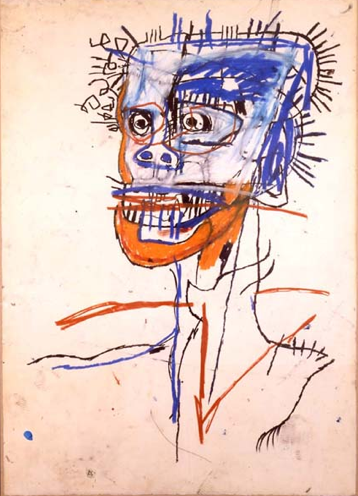
untitled (head of a madman), 1982 -- a nod to "self portrait" by van gogh

horn players, 1983
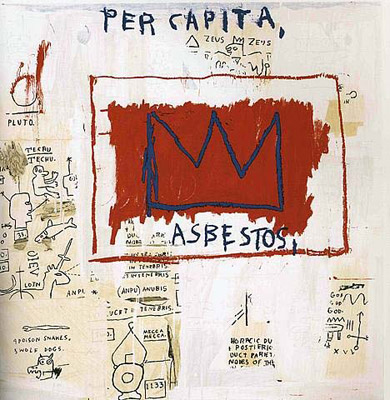
per capita, 1981
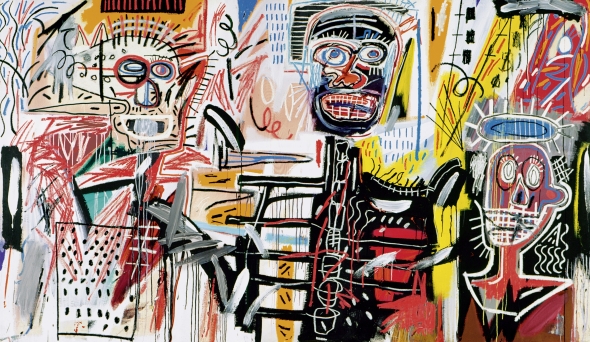
philistines, 1982
One last note on Basquiat — he died the way rock stars usually die: way too fucking famous and from a heroin overdose. August 12, 1988 was his last day on this earth. Basquiat left behind over 1,000 paintings and 1,000 drawings. He was the youngest artist ever to participate in Documenta VII (an exhibition for modern & contemporary art held every five years in Germany) and one of the highest grossing artists of his time. Here’s the thing though, I hate writing this because I feel like even though it’s the truth, it adds to this myth that living hard and dying young is cool. It also glamorizes and upholds this idea that in order to be remembered as a significant artist, heroin and death need to be involved. I’m over that, like so so over it. The worlds that foster our talents also tend to unabashedly consume us for our gifts, and then spit us out onto a bed of needles and empty baggies.
So out of care and randomness, I’d like to share this brilliant discussion on the trap of celebritizing, exalting and isolating artists and their work. It’s a TED talk from Elizabeth Gilbert and as corny as it sounds, it’s something Basquiat and others like him, like you, like me, need to hear. Our art is worth living for. And before you come running at me about how I’m ending this post on a brilliant man of color with some white lady talking about hippie fancy love stuff, just know that I get it, but it’s still an important talk. So dig it and know that I come from a place of love, always.
Nobody loves a Genius Child. Kill Him – Let his soul run wild.
-Langston Hughes
Tell me things I don’t know about Basquiat. I count on you, the awesome reader homos, to know all the other things like you always do. Share what moves you about his work or what doesn’t. Just be boom for real.
Artist Attack! Gluck Was Subverting Gender Norms Before It Was A Thing
 Art Attack Month:
Art Attack Month:
0. 1/28/2012 – Art Attack Call for Submissions, by Riese
1. 2/1/2012 – Art Attack Gallery: 100 Queer Woman Artists In Your Face, by The Team
2. 2/3/2012 – Judy Chicago, by Lindsay
3. 2/7/2012 – Gran Fury, by Rachel
4. 2/7/2012 – Diane Arbus, by MJ
5. 2/8/2012 – Laurel Nakadate, by Lemon
6. 2/9/2012 – 10 Websites For Looking At Pictures All Day, by Riese
7. 2/10/2012 – LTTR, by Jessica G.
8. 2/13/2012 – Hide/Seek, by Danielle
9. 2/15/2012 – Spotlight: Simone Meltesen, by Laneia
10. 2/15/2012 – Ivana, by Crystal
11. 2/15/2012 – Gluck, by Jennifer Thompson
![]()
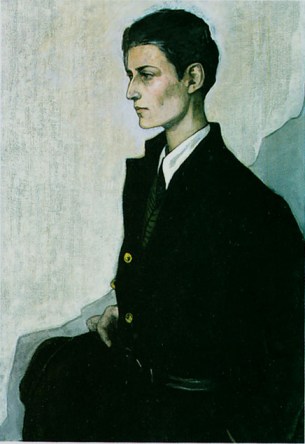
peter, the girl
I’ll be honest: I don’t know much about visual art. I mean, I’ve seen it. I’ve spent time wandering the rooms of the Tate looking thoughtful. And I’ve done my share of staring at naked saints on Italian mezzanines. I’ve never cried about that kind of art. But I’ve come to realise that the times I have had feelings about it have been when I knew a little bit about the person behind it. That’s why Vasari wrote The Lives of the Artists, right? Self-Portrait with a Bandaged Ear wouldn’t be so great if we didn’t know lead-poisoning made Van Gogh sever his ear and give it to a prostitute. And Tracy Emin’s sketch of a woman masturbating probably wouldn’t have caused so much fuss if we didn’t expect to see her staggering around Soho at 4 a.m., with a half-empty bottle of red and her left boob hanging out (that actually happened). So with that in mind, there’s someone I think you should really know about (if you don’t already). Her name is Gluck and she might be someone you’d have wanted to sleep with if you’d been alive in the twenties.
I only know about Gluck because once I got lured into a gay walking tour that went by her house. Then I saw a self-portrait. Then I started reading the internet. And although there’s not much out there about her, Gluck’s life and work are relevant. Why? Because they are among the only visible things of that time that probably represent YOU, had you been a queer Englishwoman before the Second World War happened.
Gluck is a bit like the Gertrude Stein of the oil-paint world, in that she was strong-willed, androgynous, and a bit rude. She also had a studio where lots of lesbians used to hang out. She is brilliant because she ignored pretty much every social rule about gender by doing a lot of things that were considered inappropriate for a woman of that class and time. Also, her paintings are really good.
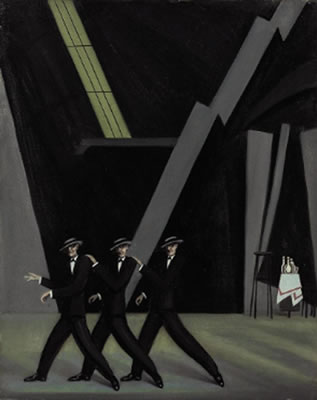
She was born Hannah Gluckstein in 1895. That means she was born in the Victorian times, when women had almost NO rights and the suffragette movement was only just starting to happen. Her father was an Englishman who owned the J. Lyons and Co. coffee empire, her mother was an American opera singer, and her brother grew up to be a conservative politician. In other words, they were rich and conventional.
No surprises that they wanted her to first get educated, then get married. But she found her way to art school instead. Not only that, she cut off all her hair and started wearing men’s clothing. By the time she’d finished school she had abandoned her family name completely, and answered to nothing other than Gluck. This was because she wanted to be known by her art and not by her gender. On the back of publicity prints of her paintings she wrote “Please return in good condition to Gluck, no prefix, suffix or quotes.” And she even resigned from a prestigious art society because someone had called her Miss Gluck on a letterhead.
This woman was a fighter. And the attitudes people had towards her are still really resonant today; walking around London in tailored shirts and gentleman’s shoes, her father thought it was all just a pose. And her mother put it down to a kink in the brain. But it didn’t stop them from giving her a huge private income that allowed her to have a house in London and a studio in Cornwall.
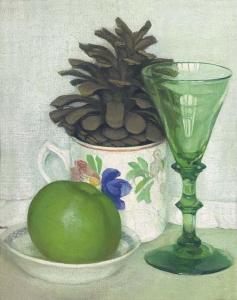
breakfast
There she spent time painting and (I like to imagine) having lots of girl-sex. Romaine Brooks even came over from Paris to visit and paint her portrait. The painting is called Peter, a young English girl and it’s really awesome (see top image). Not only does Gluck look hot in the portrait, it probably made people of that time revaluate their conventional ideas about gender by bringing androgyny a tiny bit closer to the mainstream.
Gluck painted everything. In Cornwall she painted landscapes; in London she painted party scenes from the dance floor of the Pavilion. She was famous for her portraits of women and her beautification of their sass and arrogance in a society still mostly confined to good behaviour. When she started an affair with the famous florist Constance Spry, Gluck started painting flower arrangements. And during the war she painted soldiers shooting pool or just hanging out.
We should definitely salute her. She defied her family’s conservatism, was openly out, didn’t give a fuck what society thought about her gender identity, and she made some incredible art. And if that wasn’t enough, she seems to have had a list of sexual conquests en ratio with Shane’s (given the not-that-progressive nature of that era as a whole). One of her most famous paintings is called Medallion, a celebration of her marriage to socialite Nesta Obermer.
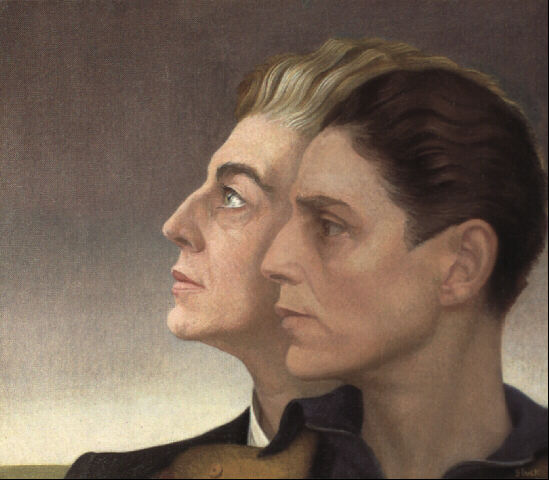
gluck's big love, nesta
As it’s not lawful to get gay-married in 2012, we have to assume this marriage was more figurative. Nesta used to call her Dear Tim or Timothy Alf, which is cute. But eight years later she broke it off on account of the fact Gluck was getting demanding and possessive.
The sad thing is this: I do not think Gluck aged well. She became cantankerous and her confidence turned into arrogance. She was allegedly totally heartbroken about Nesta, which is something that didn’t stop her pursuing Edith Shackleton Heald (the first female reporter in Britain’s House of Lords) almost immediately. The two quickly shacked up together in Edith’s country estate and spent the next 30 years in a turbulent relationship that made Gluck stop painting and disappear from the public eye. Instead of making art, she started a 10-year war with commercial paint manufacturers, insisting there be a higher fixed standard of art materials available. Luckily for us, she did do one more show before her death in 1978. Instead of party scenes and women, the show was full of love-loss, wasted years and death; the most famous painting is a decaying fish-head entitled Rage, Rage against the Dying of the Light.
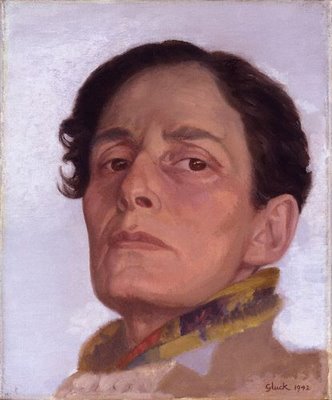
i like to think this self portrait is gluck saying "think i give a fuck?" to a bigot
It’s a real shame that Gluck is not better known outside the art world. Her life and work is a significant (albeit small) slice of our history. Even if she died sad, she had a pretty remarkable life, being a queer woman subject to the same attitudes and issues that we face almost a century later. Given the time she was incredibly brave, and so completely at ease with her own sexuality that I think she deserves a little bow from all of us.
Artist Attack! Ivana Is a Self-Taught Force of Nature and Tattoos
 Art Attack Month:
Art Attack Month:
0. 1/28/2012 – Art Attack Call for Submissions, by Riese
1. 2/1/2012 – Art Attack Gallery: 100 Queer Woman Artists In Your Face, by The Team
2. 2/3/2012 – Judy Chicago, by Lindsay
3. 2/7/2012 – Gran Fury, by Rachel
4. 2/7/2012 – Diane Arbus, by MJ
5. 2/8/2012 – Laurel Nakadate, by Lemon
6. 2/9/2012 – 10 Websites For Looking At Pictures All Day, by Riese
7. 2/10/2012 – LTTR, by Jessica G.
8. 2/13/2012 – Hide/Seek, by Danielle
9. 2/15/2012 – Spotlight: Simone Meltesen, by Laneia
10. 2/15/2012 – Ivana, by Crystal
![]()
After deciding in early 2009 that I was going to take the plunge and get a tattoo, I read every article on the art form that I could get my hands on. Newly schooled on the difference between a tattooist and a tattoo artist, I decided that if I was going to get a sizable piece of art inked on predominately visible part of my body then I’d better search high and low for the latter, for the best tattoo artist that I could find.
After almost one year of researching prospective tattoo artists in Australia and even overseas, I finally found The One. Her name was Ivana, and the moment I saw her online portfolio it was love at first sight. Unlike with the hundreds of tattoo artist portfolios I’d looked at before hers, there was not a single tattoo in Ivana’s book that I felt indifferent or ambivalent about. Every piece was like nothing I had ever seen before, I wished they were all tattooed on my body.
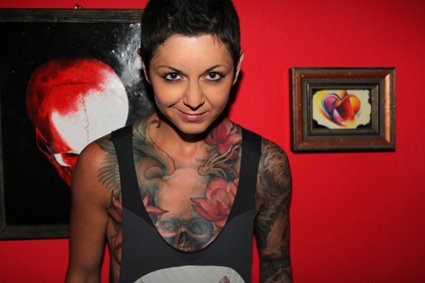
For the most part, Ivana creates brightly coloured pieces of art that pop off the skin as if they were 3D. However her style seems to be continually evolving. Although specialising in black and grey tattoos at the beginning of her career, Ivana now creates original and often surreal pieces that are a blend of her clients’ fantasies and her own. Her distinctive colour and shading work and noticeable lack of a black outline in most of her pieces are just a few elements that make her tattoos stand out from the crowd.
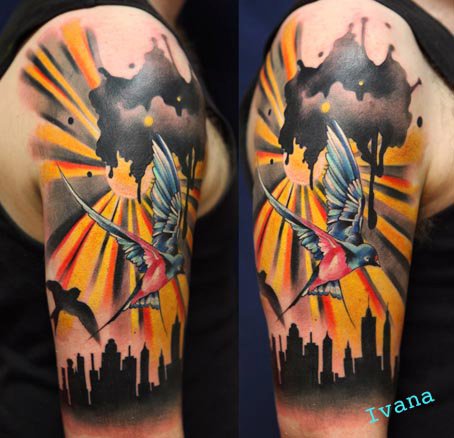
The quality of Ivana’s work is no doubt partly due to her desire to have creative freedom, choosing to turn down the tattoo requests that she will not enjoy or believes won’t work well on skin. As she explained in an interview with Skin Artists, “I like the fusion of people’s fantasies with mine, but mostly I like freedom in what I do. I like when someone gives me a little description of what they want and I can create whatever.. In many cases I’m the main creator.”
Ivana hails from Trencin, Slovakia, though she no longer resides there. Remarkably, she is a self-taught tattoo artist who has had no formal art training.
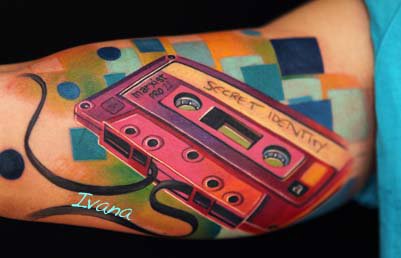
Judging by the number of people who have stopped me in the street and asked “is that by Ivana?”, I’m far from being the only admirer of Ivana’s work. Check out her Facebook albums and be amazed.
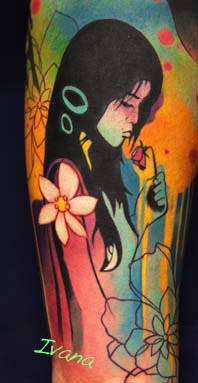
Art Attack! Hide/Seek Tells Half the Story
 Art Attack Month:
Art Attack Month:
0. 1/28/2012 – Art Attack Call for Submissions, by Riese
1. 2/1/2012 – Art Attack Gallery: 100 Queer Woman Artists In Your Face, by The Team
2. 2/3/2012 – Judy Chicago, by Lindsay
3. 2/7/2012 – Gran Fury, by Rachel
4. 2/7/2012 – Diane Arbus, by MJ
5. 2/8/2012 – Laurel Nakadate, by Lemon
6. 2/9/2012 – 10 Websites For Looking At Pictures All Day, by Riese
7. 2/10/2012 – LTTR, by Jessica G.
8. 2/13/2012 – Hide/Seek, by Danielle
![]()
When the security guard announced that the Brooklyn Museum was closing in ten minutes and I shuffled out of the Hide/Seek exhibition, I couldn’t help but turn to my girlfriend and ask, “Why so many gay dudes?”
I should back up. This exhibition is important — Hide/Seek explores gender and sexuality as themes in modern American portraiture. Okay, so there’s enough Andy Warhol to spend an hour on, and I know we learned about his soup can IN THIRD GRADE (even if the teacher did forget to mention the gay stuff), but there are lesser known artists, explorations of sexuality’s societal challenges, and a few works that almost moved me to tears. As Roberta Smith concludes in her New York Times review, it is a “significant beginning” as the first major art show to focus on homosexuality as an influence.
Real talk: it doesn’t delve as deep as it could. The show is a broad overview of several decades of art and as David C. Ward, one of the original curators, shared in an interview with ArtInfo Blog, it purposefully shies away from provocation. This shouldn’t surprise us too much considering the works were first displayed by the National Portrait Gallery in our fine nation’s capital. Although the show in DC was funded by private donors, The Smithsonian receives enough federal funding for its facilities that when the right Republicans complained (a certain weepy House Speaker-designate among them), the David Wojnarovicz video A Fire in my Belly (1987) was pulled from the exhibition for an allegedly sacrilegious depiction of an AIDS victim’s suffering, namely a Christ figure on a cross covered in ants. Georgia Representative Jack Kingston called for a review of the NPG’s funding and let us know via Fox News that he really disliked that Annie Leibovitz photo of Ellen DeGeneres grabbing her breasts, too.
You should obviously stop by to sock it to the man. The show travels to Washington State’s Tacoma Art Museum in March. You might find that some of the pieces really catch you off guard. I probably would’ve overlooked several powerful messages had the works not been amassed with the purpose of exploring the visibility of sexuality.
Take this piece, for example:

Tseng Kwong Chi, New York, New York (1979) (courtesy of www.tsengkwongchi.com)
My reaction was to wonder, “What’s so gay about that?” I managed to suppress any phallus jokes out of reverence for a national tragedy. The blurb on the wall urged me to consider the meaning of the word “spy.” In this photo, a self-portrait, Tseng is dressed in a traditional Mao suit in order to depict himself as an “ambiguous ambassador” from China posing for a snapshot in front of one of the world’s most popular tourist destinations. In 1979, could he not have been suspected of spying for Communist China? But gays were also “spies” in that era; it was a slang term that referenced the way they existed quietly in society, playing straight to be part of it when in actuality they were outsiders, observers of an exclusionary, thereby foreign, society. Here Tseng embodies both meanings of the word.
I also want to share with you what ended up being my favorite work of art:
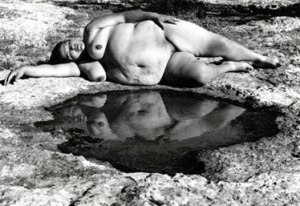
Laura Aguilar, Nature Self-Portrait #4 (1996) (courtesy of oneartworld.com)
It took a minute to put everything together, but I eventually realized that Aguilar was going to bat for underdogs everywhere. She is many of the things American society systematically pushes to the fringes: a woman, Chicana, gay, obese, and dyslexic, to name those factors of which I’m aware. However, in this photograph she poses unabashedly nude in nature and the result is a landscape that includes her as matter-of-factly as it might include a grove of Aspen. Her figure posed by a pool of water is evocative of a mountain range reflected in a lake, which, unlike the life society might expect or prefer Aguilar to lead, is majestic, open, and dignified. This piece is an empowered commentary on American oppression.
There is more lady-work you should catch—portraiture from Annie Leibovitz, Cass Bird, and artists from further in the past like Romaine Brooks, who you’ll find looking just dandy in a self-portrait from the 1920s. Unfortunately I left the show feeling bashed over the head by the story of the gay male, developed chronologically over the last century and a half. It’s possible that in a show as period-based as this one, the absence of a large lady presence can be explained away with historical reasons. For instance, considering the Centers for Disease Control and Prevention have no record of any transmission of HIV ever between female sex partners, it would make sense for female artists to have less on display than their male counterparts in the section of the show labeled “AIDS.” My girlfriend and I had another, more disappointing hunch, though. In a show that sticks mainly to mainstream artists (Warhol, Jasper Johns, and Robert Rauschenberg come to mind), women get the short end of the stick because herstory is STILL telling the tale of our struggle to break into the mainstream and be taken seriously.
As I’m sure you’ve been told already, go see this exhibition. Bring a large bag because there’s free candy (Ross Laycock is now turning over in his grave). However, you may find in the end that your story hasn’t been told yet.
![]()
About the author: Danielle lives in Brooklyn and has tried to free herself from the internet, so you are either very lucky or very unlucky to have found her here. She spends most of her time attempting to alleviate her road rage by running, writing, and partaking in hot cups of puerh. Most of her work occurs spontaneously and under her breath. However, as she reemerges on the web, you’ll be the first to know where to find her.
Artist Attack! LTTR Is Here to Reconstitute a New Team Under An Old Threat
 Art Attack Month:
Art Attack Month:
0. 1/28/2012 – Art Attack Call for Submissions, by Riese
1. 2/1/2012 – Art Attack Gallery: 100 Queer Woman Artists In Your Face, by The Team
2. 2/3/2012 – Judy Chicago, by Lindsay
3. 2/7/2012 – Gran Fury, by Rachel
4. 2/7/2012 – Diane Arbus, by MJ
5. 2/8/2012 – Laurel Nakadate, by Lemon
6. 2/9/2012 – 10 Websites For Looking At Pictures All Day, by Riese
7. 2/10/2012 – LTTR, by Jessica G.
![]()
LTTR is a feminist genderqueer artist collective, and they are fierce as fuck. LTTR was founded in 2001 and produced an annual independent art journal for about seven years, with an inaugural issue titled “Lesbians to the Rescue,” followed by “Listen Translate Translate Record,” (both LTTR, get it?) “Practice More Failure,” “Do You Wish to Direct me?,” and most recently “Positively Nasty”. They’ve also hosted and produced a number of performance series, readings, screenings and collaborations. LTTR is was founded by Ginger Brooks Takahashi, K8 Hardy and Emily Roysdon. Ulrike Müller joined LTTR in 2005.
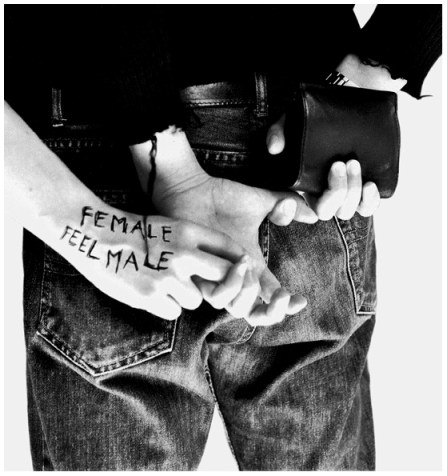
Female Feelmale by Pauline Boudry (issue ii)
Each of these ladies is seriously badass, and each has her own practice independent of LTTR. The LTTR Journal is sourced via an initial open call, and is then edited collectively by the group. Each issue was produced in an edition of 1000 and, devastatingly for people like me, all are sold out and very hard to get your hands on. I have a copy of Do You Wish To Direct Me? and it is without question one of my favorite things in my library/collection. This turn of phrase — “Do You Wish to Direct Me?” — has become my number one response to the day-to-day patriarchal nonsense that I encounter at my job (and everywhere else for that matter). If you want to check it out, along with the rest in the series, visit the Lesbian Herstory Archives (Have you been there? It’s amazing. Go there! In fact, let’s go together), Fales Library at NYU, and MoMA special collections in New York; Stichwort Archiv der Frauen- und Lesbenbewegung and Generali Foundation in Vienna; Bildwechsel in Hamburg, and MAKE, Goldsmith’s Women’s Art Library in London.
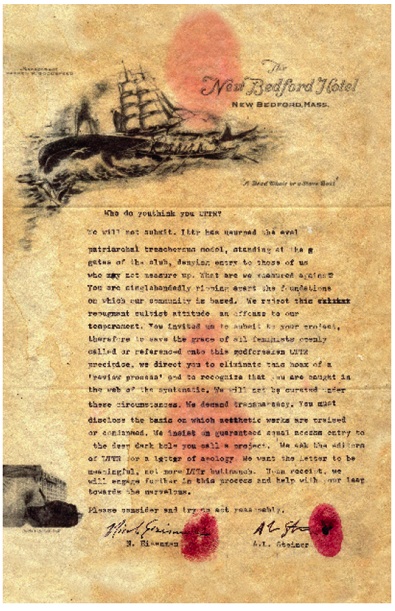
Who Do You Think You LTTR? Copyright Ridykeulous 2005 by Ridykeulous (issue iv)
LTTR’s last event was in March 2008, but a complete archive of their works can be viewed and perused on their website: lttr.org.
Excerpted from Editorial (Issue I: Lesbians to the Rescue)
“…we’re here to reconstitute a new team under an old threat. to embrace our historical birth into feminist sexes and to move with the brilliant bodies languages identities and arts that this long walk has produced. but this lesbian we speak of I find him as ambiguous in nature as in verse. I find her over and over again. Listen Translate Translate Record. Lacan Teaches to Repeat. Lesbians Tend To React. Limits Through To Reasons. thank you. emily roysdon
we’re getting up and on the go with no finish line and I like it. no lines but we make them, chants out of video pixels, aerosol paint and photos. we cheer in rotating circles, face forward, face out for our fields of vision. pencilspensdigits on keyboards. everyone in their own uniform! moving bodies in performance making daily manifestos.
we’re so proud. k8 hardy”
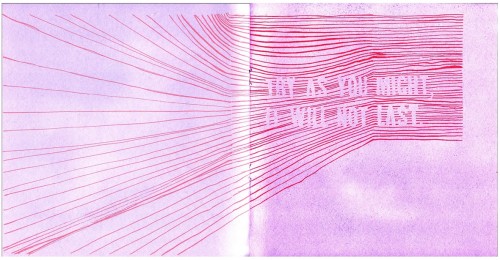
Centerfold by Courtney Dailey (issue i)
